Samsung QN900D is undoubtedly the top model for 2024. This television is equipped with Mini LED technology, which offers excellent picture quality – deep blacks and high brightness make films and high-resolution content look fantastic. When watching dynamic scenes in movies, the colours and details were exceptionally good – especially after calibration. HDR also delivers – bright elements have great detail levels, and colours are vibrant and natural. One of the strongest points of QN900D is the smooth motion. Supporting a refresh rate of 240 Hz at 4K resolution is rare in the market. Dynamic scenes in sports or games look incredibly smooth, with no trace of blurring. However, it’s worth adding that the full capabilities of this feature will mainly be utilised by advanced PC users. An input lag of 9 ms additionally ensures very responsive gameplay, which will surely please gamers. Tizen runs smoothly and offers access to all popular applications, such as Netflix, YouTube, or Disney+. Moreover, SmartThings features and support for AirPlay make it easy to connect the television with other devices in the home. This is a great solution if you value convenient control of your smart home. An additional feature is Ambient Mode – the television can blend into the living room decor by displaying decorative graphics. QN900D not only performs well but also looks great. Slim bezels, a central stand, and the One Connect module that allows cables to be hidden make the television present elegantly. If aesthetics are important to us, it will be hard to find something better. As a flagship model, QN900D is simply expensive. Unfortunately, the lack of agreement between Samsung and Dolby Vision may still be a significant downside. Especially when watching content on platforms that utilise this format. In the most demanding HDR scenes, it also happens that the contrast is not as perfect as one might expect. And what about 8K resolution? For now, it’s hard to find content that fully utilises it, unless we are technology enthusiasts of the future. Samsung QN900D is certainly a television for those seeking a top-tier device and are willing to pay for it. However, if we are looking for similar quality at a significantly lower price, it’s worth mentioning the equally good QN95D – it offers a similar picture quality, without the 8K resolution, which is still more of a curiosity than a standard.
- Matching (Score)
- Our verdict
- TV appearance
- Where to buy
- Contrast and black detail
- HDR effect quality
- Factory color reproduction
- Color reproduction after calibration
- Smoothness of tonal transitions
- Image scaling and smoothness of tonal transitions
- Blur and motion smoothness
- Console compatibility and gaming features
- Input lag
- Compatibility with PC
- Viewing angles
- TV efficiency during daytime
- Details about the matrix
- TV features
- Apps
- Playing files from USB
- Sound
Samsung QN900D Neo QLED 8K vs Samsung QN90F / QN92F
Direct compare
QN900D / Neo QLED / Excellence Line

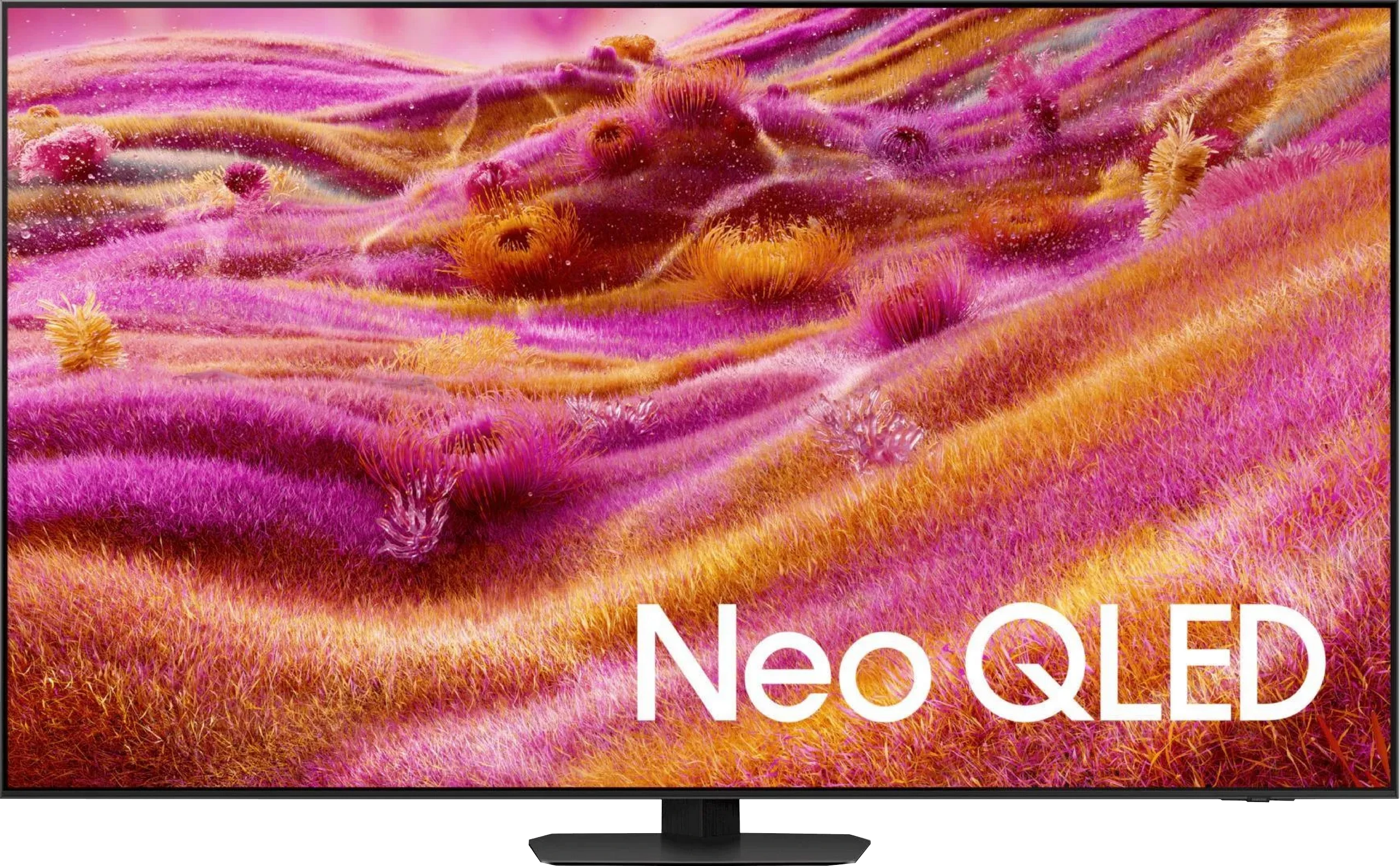
Panel type: LCD VA (wide viewing angle)
Resolution: 7680x4320
System: Tizen
Model year: 2024
Complete the survey to find out the result

Panel type: LCD VA
Resolution: 3840x2160
System: Tizen
Model year: 2025
Complete the survey to find out the result

Overall rating
7.5
7.9
Movies and series in UHD quality
7.6
7.8
Classic TV, YouTube
7.8
7.6
Sports broadcasts (TV and apps)
7.6
7.3
Gaming on console
9.0
8.8
TV as a computer monitor
8.0
8.8
Watching in bright light
5.0
7.2
Utility functions
7.4
7.7
Apps
8.7
8.7
Sound quality
7.4
7.8
Complete the survey to find out what fits your preferences
Advantages
Great contrast and blacks
High brightness - good HDR effect
The smoothest TV in the world - 4K@240Hz
Great for gaming - low input lag, many features for gamers
Good digital processing - handles low-quality material well
Advanced operating system - Tizen
Great design - super slim, OneConnect, "floating" central stand
Very good contrast and black levels
Amazing HDR brightness in films
Very good TV performance during the day thanks to the matte panel and high brightness
High motion fluidity – up to 165 Hz in PC mode
Low input lag
Plenty of features for gamers, including the proprietary gaming smoother Game Motion Plus
High susceptibility to picture calibration
Smooth Tizen operating system with smart home (IoT) features
Pleasant sound with noticeable bass despite the slim design
Modern design
Disadvantages
Price
No Dolby Vision
Worse viewing angles compared to its predecessor QN90D.
No DTS sound for Blu-ray home cinemas.
No HGiG feature*
*We hope this issue will be resolved quickly. We are monitoring the situation closely.
Our verdict
Samsung QN90F is a television that demonstrates how maturely miniLED technology can be developed in many respects. We have excellent contrast and black levels, very high HDR brightness that works well for both movies and games, and a matte screen that makes a significant difference in everyday use. It is precisely this feature that makes the QN90F one of the best TVs for watching in sunny living rooms – reflections and glare practically disappear, and the picture remains clear and readable. Gamers, on the other hand, are provided with all the essential features, very low input lag, and a unique Game Motion Plus mode, which continues to be Samsung’s strong advantage over the competition. In addition, there is a fast Tizen system, high-level smart functions, and quite pleasant sound that can be enhanced with a soundbar as part of Q-Symphony. However, it wasn’t without compromises. Samsung decided to forego a wide-viewing angle coating – and while the matte screen performs excellently during the day, a noticeable drop in brightness and colour intensity can be seen at wider angles. It’s also a shame that with software updates, HGiG support has disappeared, which could be a significant downside for demanding gamers. Despite these comments, the QN90F remains one of the best, if not the best, 4K miniLED TVs you can currently buy. It’s a model that combines excellent picture parameters, high functionality, and modern design, while also being exceptionally practical for everyday use. If someone is looking for a TV for a bright living room that can handle movies, sports, and games alike – it’s hard to find a better choice today.
TV appearance





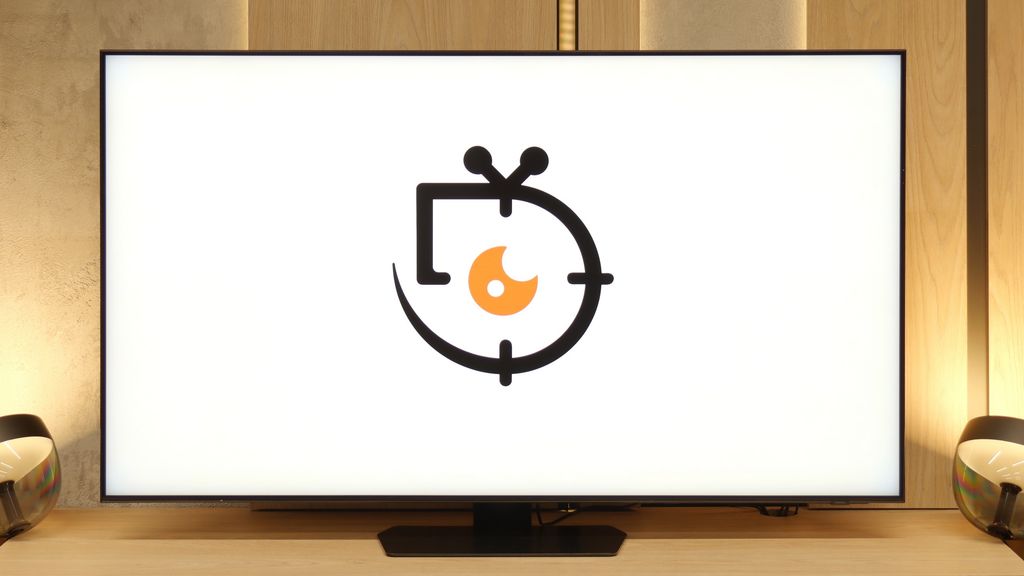
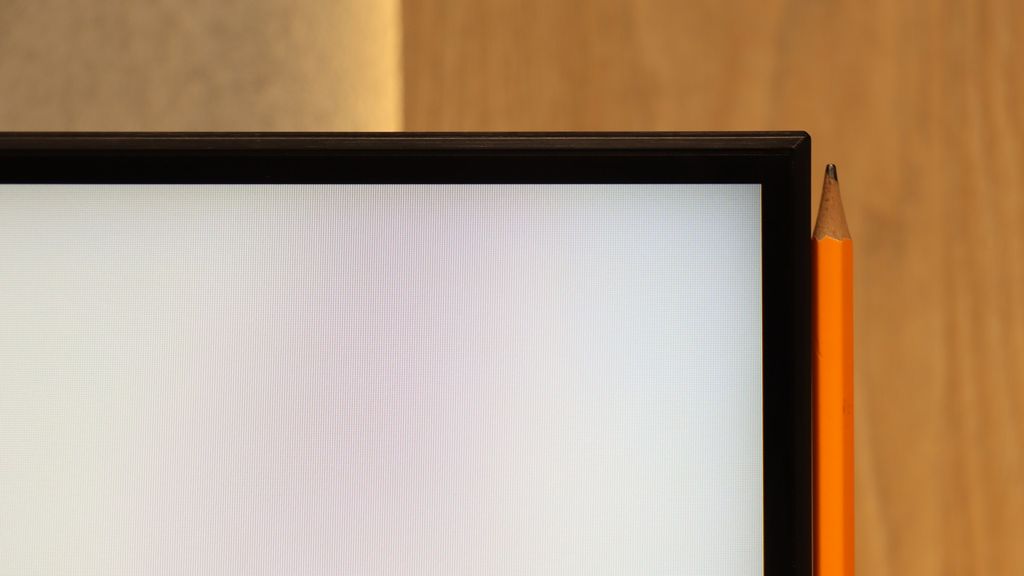
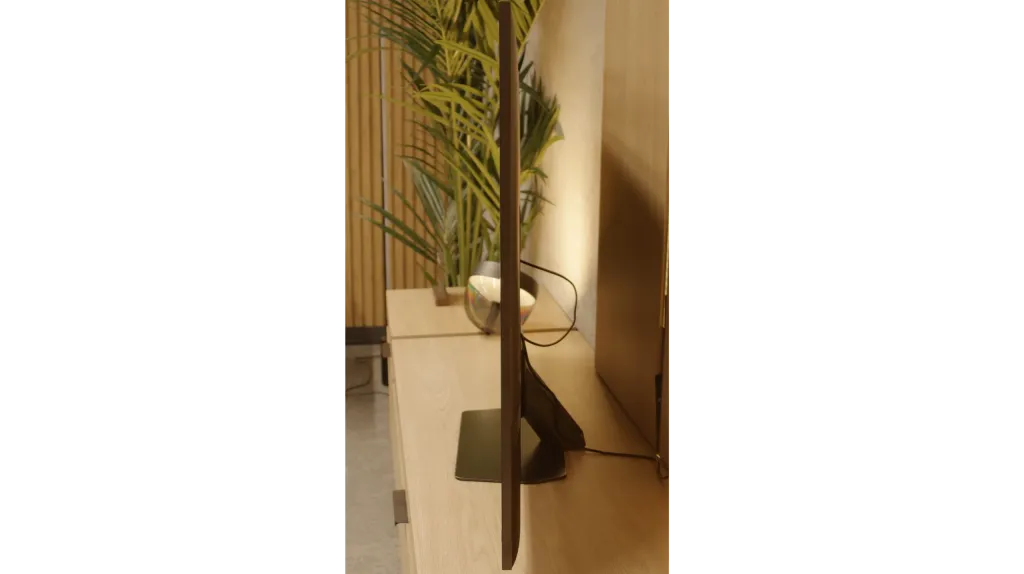
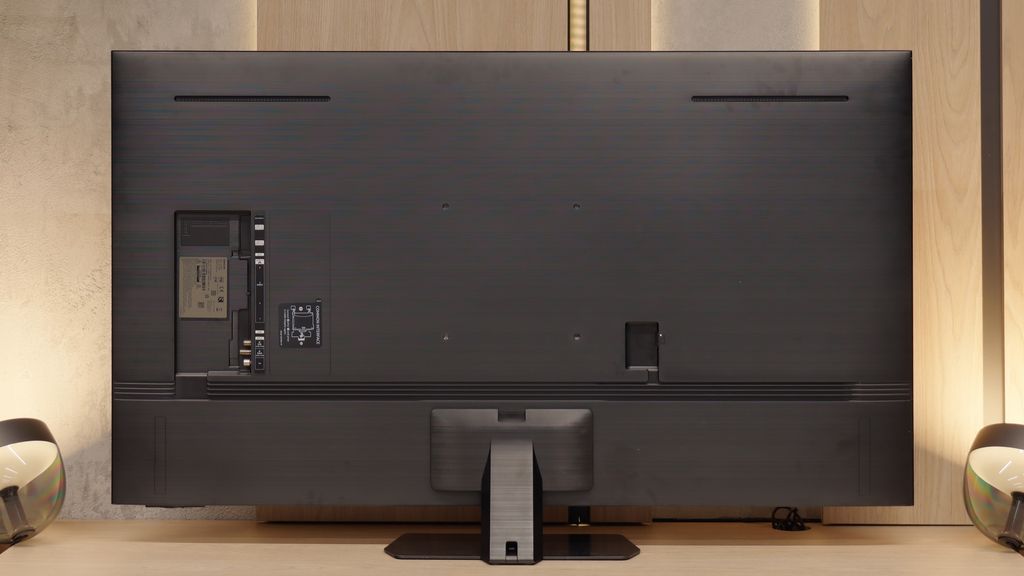
Contrast and black detail
8/10
8/10
Local dimming function: Yes, number of zones: 1344 (56 x 24)
Local dimming function: Yes, number of zones: 504 (14 x 36)
Contrast:

Result
∞:1

Result
205,000:1

Result
89,000:1

Result
7,800:1

Result
4,000:1

Result
1,530,000:1

Result
62,450:1

Result
186,400:1

Result
7,400:1

Result
4,500:1
Halo effect and black detail visibility:

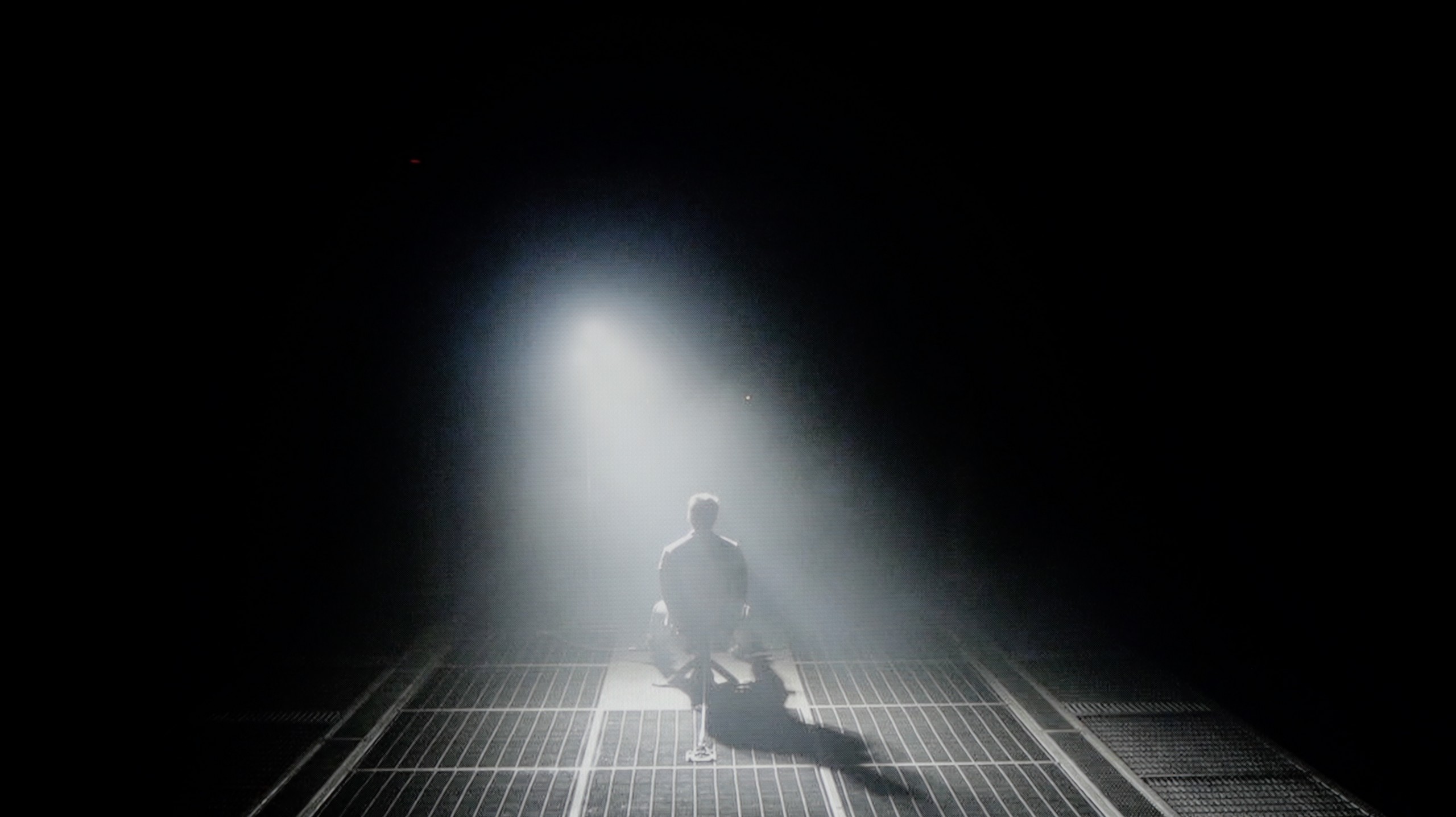
As befits the flagship model in the series, the Samsung QN900D television is equipped with a VA panel, which in the 65-inch version offers an impressive number of zones – as many as 1344. It’s worth noting that larger sizes of this television have even more zones, which naturally translates to better contrast. During tests in scenes from the film "Oblivion," the QN900D performs excellently. Contrast values approaching infinity are truly stunning, allowing this television to be confidently compared with OLEDs. Unfortunately, like all LCD televisions, this model also has its limitations. In the case of very small elements, certain irregularities are visible, such as halo effects (e.g., in the film "Sicario 2") and at times significant screen dimming (e.g., in scenes from the film "Gravity"). Despite these imperfections, the QN900D Samsung is undoubtedly one of the best LED televisions available on the market, capable of generating very high contrast.
If you compare the contrast results of this year’s QN90F with last year’s QN90D, it quickly becomes clear that the differences are minimal. In the best movie scenes, the contrast can reach values well over six digits, and sometimes even seven digits, which can be confidently regarded as results almost infinite. And indeed – in typical cinematic shots, the effect closely resembles that known from OLED televisions. Samsung deserves commendation because, despite the relatively "modest" number of dimming zones – 504 in the 55-inch variant (modest compared to Chinese competitors like Hisense U8Q or TCL C8K/C9K) – it has managed to refine the local dimming algorithms. This is particularly evident in the most challenging scenes, where compared to last year's model, the precision of dimming has nearly doubled. Of course, we still don’t have perfectly separated bright objects from black, and we can’t speak of a lack of halo effects (subtle glows around small bright objects) known from MINI-LED televisions, so QN90F still doesn’t win against OLEDs. But it is definitely approaching them in a more mature and refined way than the year before.
HDR effect quality
6.6/10
7.4/10
Luminance measurements in HDR:

Result
1447 nit

Result
665 nit

Result
907 nit

Result
432 nit

Result
793 nit

Result
1638 nit

Result
763 nit

Result
1119 nit

Result
562 nit

Result
1947 nit
Scene from the movie “Pan” (about 2800 nits)


Scene from the movie “Billy Lynn” (about 1100 nits)


Static HDR10


Dynamic: HDR10+
Dynamic: HDR10+


HDR luminance chart:
Samsung QN90F / QN92F
HDR luminance
Samsung QN900D Neo QLED 8K
HDR luminance
The Samsung QN900D easily showcases its high capabilities in light production during synthetic tests – 1400 nits is truly an impressive result. It also demonstrated these capabilities in the first scene of the movie "Life of Pi," where we see a brilliant burst of the rising sun. However, due to issues with the dimming algorithm, some problems can be observed here. In the test scenes from "Sicario 2" and the second scene from "Life of Pi," these values are not as high, averaging around 500-600 nits. While this may not be the worst result among Mini LED TVs, more could be expected given the price of the television. Nevertheless, the television deserves praise for covering a wide colour gamut of DCP P3 at 96%. Although there are technologies offering higher values, this result is still satisfactory.
Samsung QN90F can really shine with brightness. In our measurements, it reached even over 2200 nits, which directly translates to the viewing experience. In practice, this means that when a very bright scene appears in a film – for example, a sunrise in The Meg – the screen looks as if natural light is actually shining on us. This isn't just a number from a table, but a real sense of image intensity! However, the TV can't always deliver its full power. With smaller details, such as spotlights or lamps, brightness drops to 500–700 nits. This is a deliberate decision by the algorithms – by doing this, the contrast between large and small elements is better controlled, and the image doesn't lose balance. Importantly, this is still a huge improvement compared to last year's QN90D, where similar details were almost invisible, shining at just 200 nits. Here, the HDR effect is much more cohesive and credible. The only downside is the colours. The coverage of the DCI-P3 spectrum has plateaued at 91%, which can be considered a rather average result in this price range.
Factory color reproduction
6.6/10
5/10


Factory Mode
After calibration
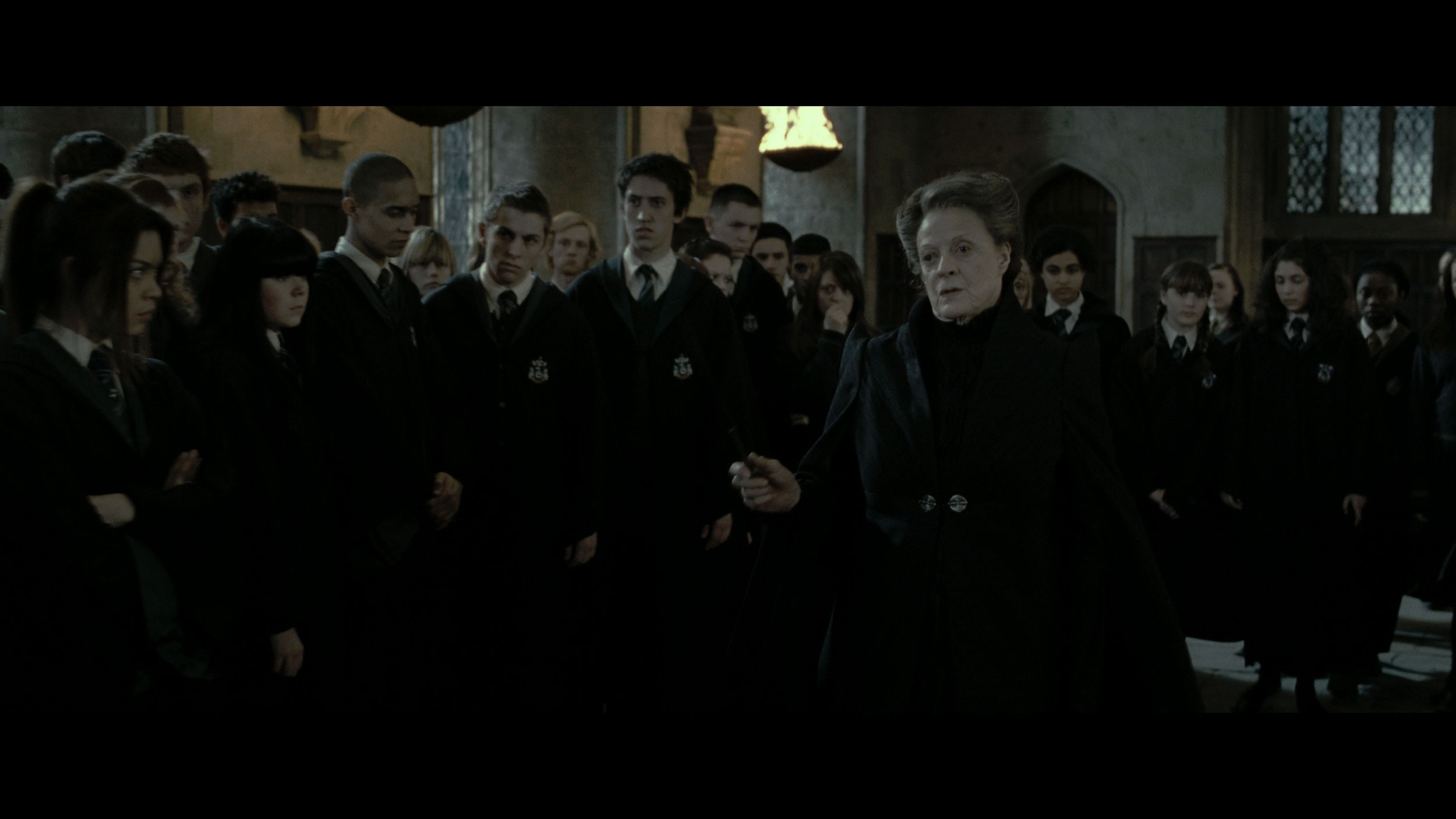
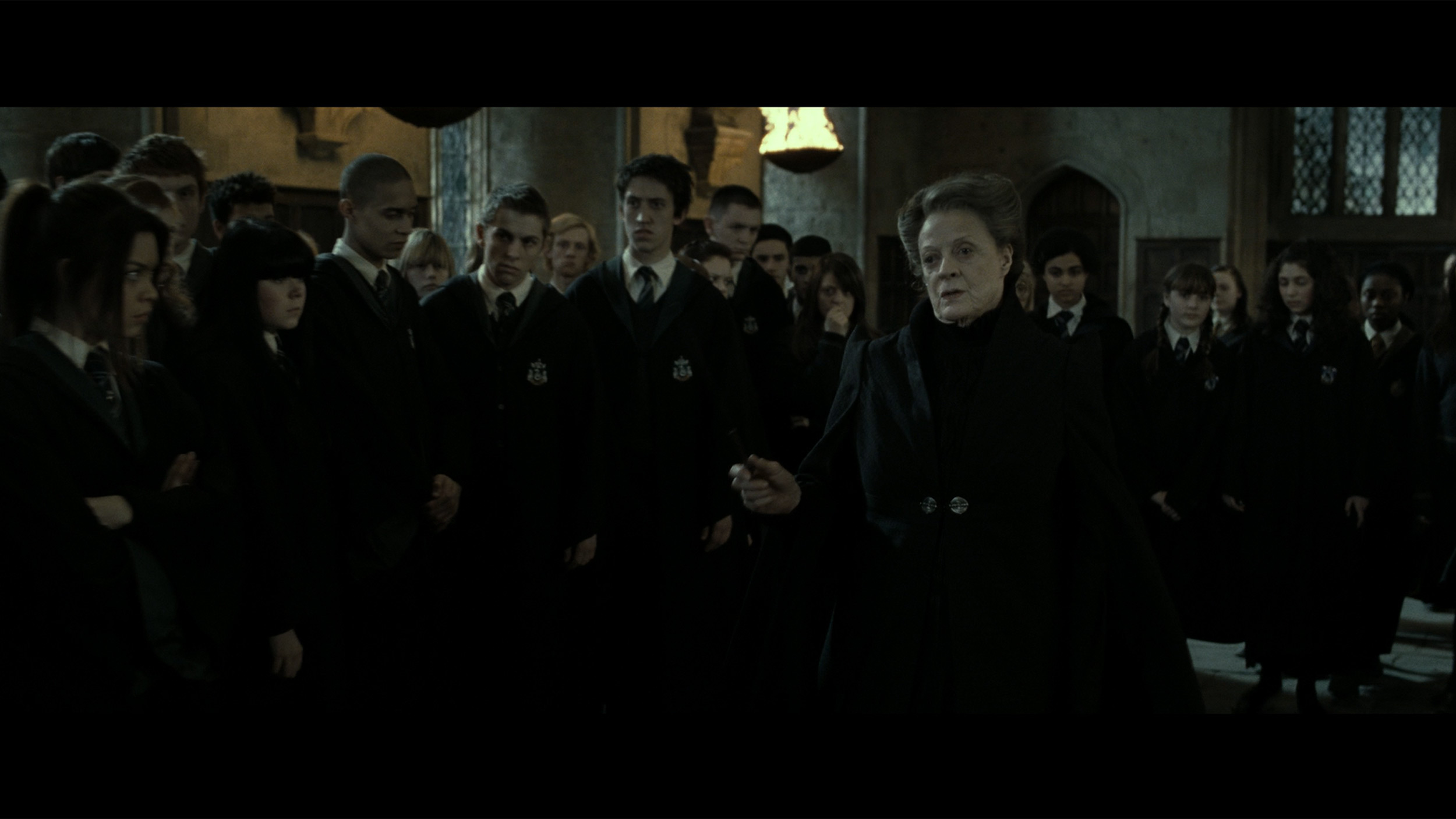
Factory Mode
After calibration
The QN900D television offers a Filmmaker mode that is designed to watch movies in the most natural way possible; however, this mode is not without its flaws. For HD content, the white balance shows a dominance of red and blue, which causes the image to shift towards pink hues. In contrast, for 4K HDR content, the situation is reversed – the reduction of blue and red levels results in warmer scenes and a shift towards yellow tones. This is confirmed by Color Checker tests, which clearly show that the colour samples veer in that direction.
When it comes to brightness and the associated contrast, the gamma is significantly distorted. The biggest issue is a noticeable jump at the beginning of the curve, indicating that dark details are overly brightened, causing the image to lose depth in the darkest areas - this is due to local dimming. For 4K HDR materials, the EOTF curve looks quite good, but it remains below the reference level, impacting the overall dynamics of the image.
The colour reproduction in the QN90F was tested in Filmmaker mode and, as is usually the case with Samsung TVs, this mode proves to be the best starting point straight out of the box. However, this does not mean that we are dealing with an image free of flaws. The white balance in SDR and HDR content was surprisingly good – colours didn't drift in any direction and even in its factory settings it looked solid. However, a problem arose with the gamma and EOTF curves, which determine how the TV manages brightness. Here, the QN90F significantly brightened the entire image, causing the black levels and colours to lose their intensity, and the overall effect resembled that of an applied milky filter. Fortunately, Samsung, unlike many competitors in the miniLED world, provides users with plenty of tools to control settings that we won't find in other manufacturers, such as Chinese brands. Therefore, we decided to see if we could squeeze the full potential out of the QN90F because we know that such a high series is capable of much more.
Color reproduction after calibration
8/10
9/10




After calibration, the Filmmaker mode can truly be called worthy of its name. The white balance for both HD and 4K HDR content has significantly improved, resulting in colours that are more natural and consistent. The image has gained in realism, with pink hues in HD content effectively eliminated, as well as the yellow haze in 4K HDR content. Thanks to the calibration, the television now offers much better colour reproduction, positively impacting the viewing experience.
When it comes to brightness, the situation with gamma is now the opposite – a clear drop is visible at the beginning of the graph, making the darkest details harder to discern. The EOTF curve for 4K HDR content has remained largely unchanged and is still below the reference level, indicating that the television still struggles to maintain adequate brightness. This is related to the aggressive dimming algorithm that affects the overall brightness of the image. You can see how the television fights to maintain high brightness or perfect black.
Despite the limitations associated with local dimming, the Samsung QN900D has improved in colour reproduction quality, as confirmed by the Color Checker test results – the colour samples are now much closer to the references, making the image more natural and pleasant to the eye.
After our adjustment of the settings, the QN90F showed what it’s really capable of – and we have to admit, it’s one of the best images we’ve seen on a miniLED screen this year. As we mentioned earlier, the white balance wasn’t a big issue even in the factory settings, but it was only after gamma calibration that we were able to get close to reference values. The same goes for HDR content, where the EOTF curve post-adjustment presents mature and consistent results. Indeed, in some films, you can notice that the smallest elements of the image are slightly brightened, and with a limited number of local dimming zones, there's still a risk of halo effect. However, it’s important to remember that such phenomena are characteristic of all miniLED TVs and it’s difficult to expect miracles even from the QN90F. The most important thing is that after calibration, the television displays an image that confidently competes with many OLED screens available on the market in terms of expressing the director's vision.
Smoothness of tonal transitions
8/10
8.9/10

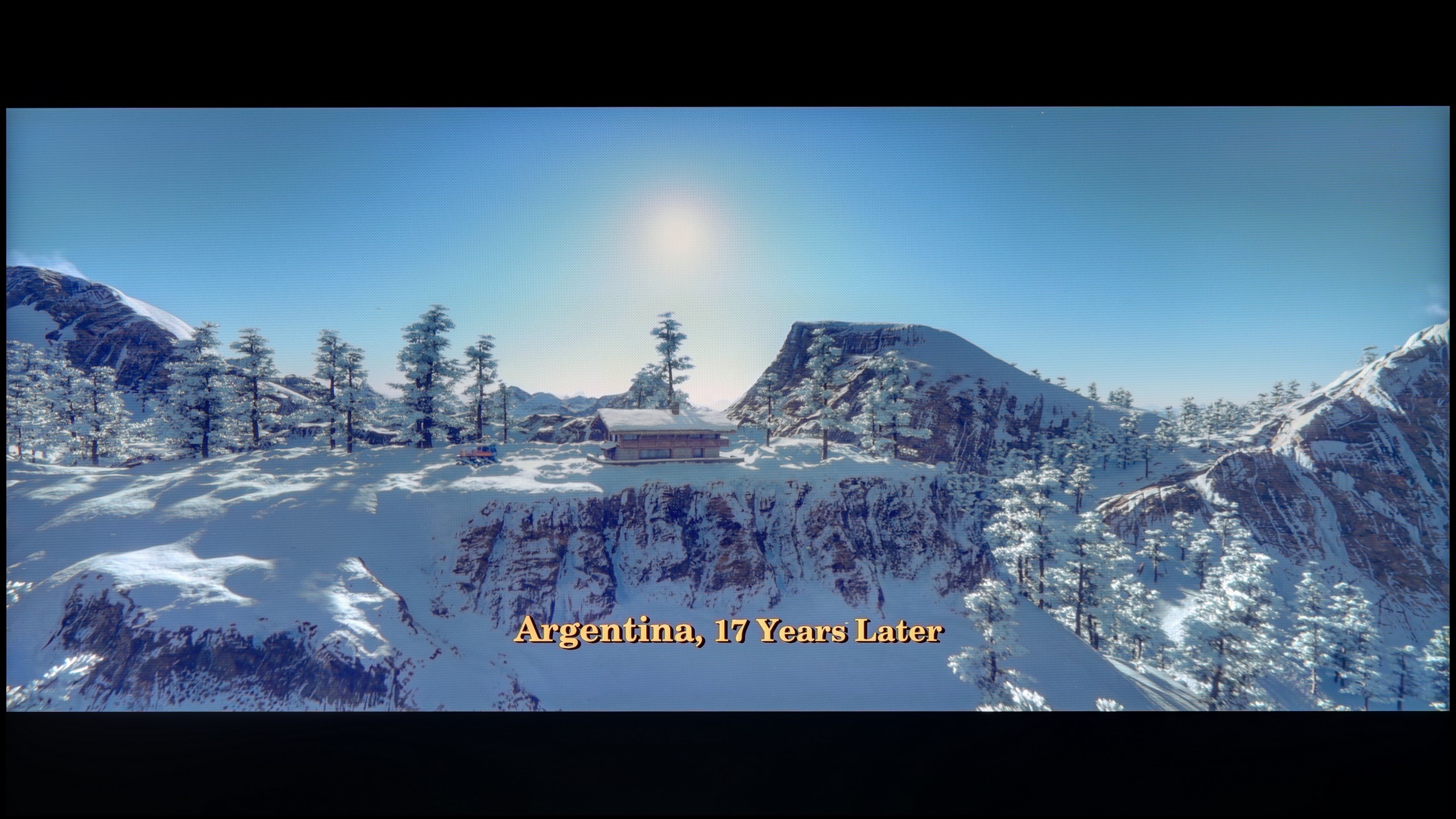



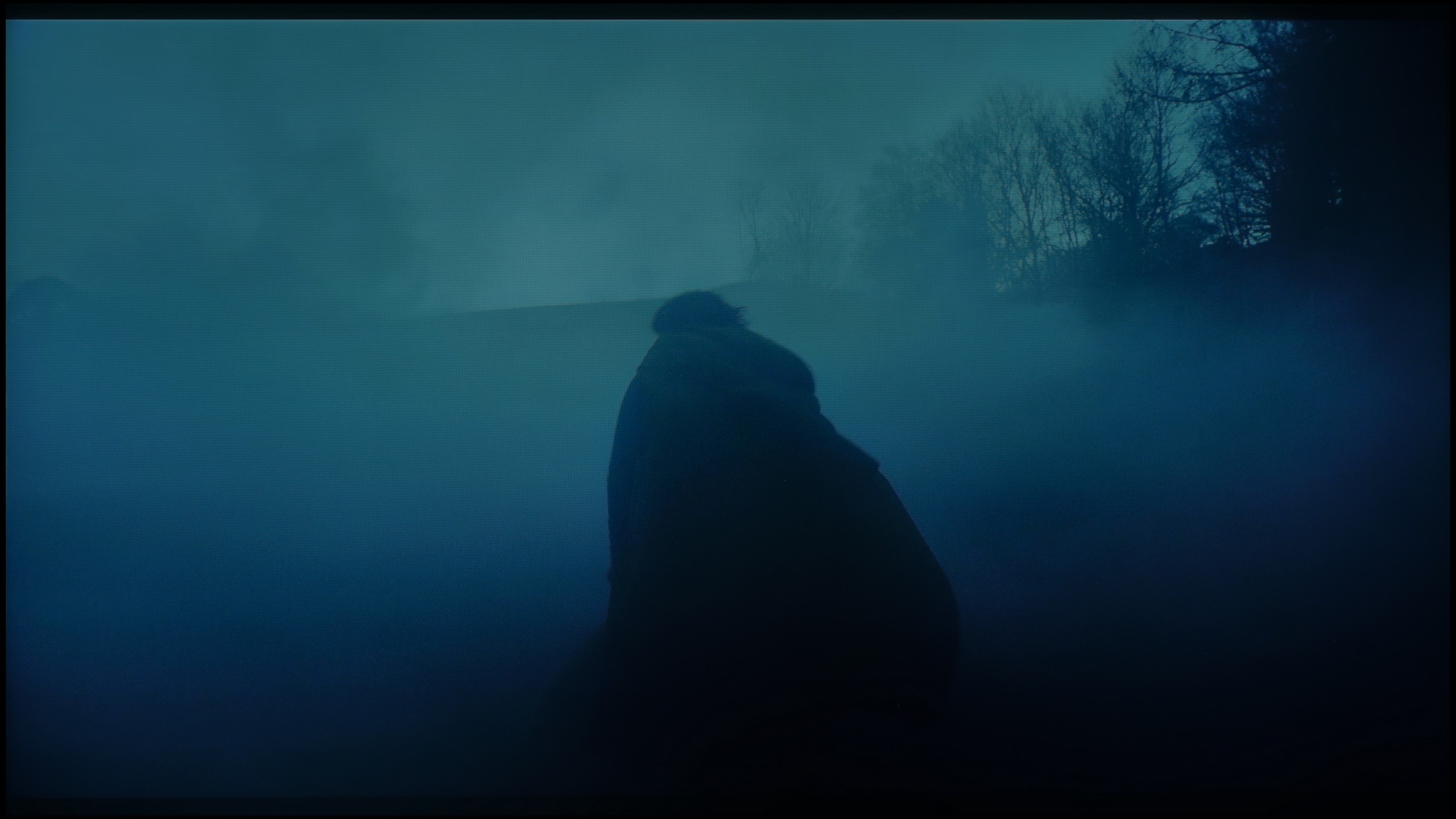






The Samsung QN900D TV handles tonal transitions smoothly, deserving a rating of 8/10. The colour gradation is generally good, although not perfect – in darker scenes, some imperfections may be noticeable to more demanding users. Despite these minor flaws, the effect should satisfy most viewers, offering natural transitions.
The tonal transitions in the QN90F are at a very good level. Regardless of the scene being tested, it was hard to find clear problems with colour blending or visible banding. Even in demanding segments, such as the scene from the film Green Knight where the actor immerses himself in red water, the image presented itself smoothly and naturally. Indeed, with careful watching, one might notice minor micro-imperfections – for example, in greys or in very bright shots – but they do not affect the overall perception. The TV performs well enough that most viewers won't notice these imperfections.
Image scaling and smoothness of tonal transitions
7/10
7.5/10
Smooth transition function

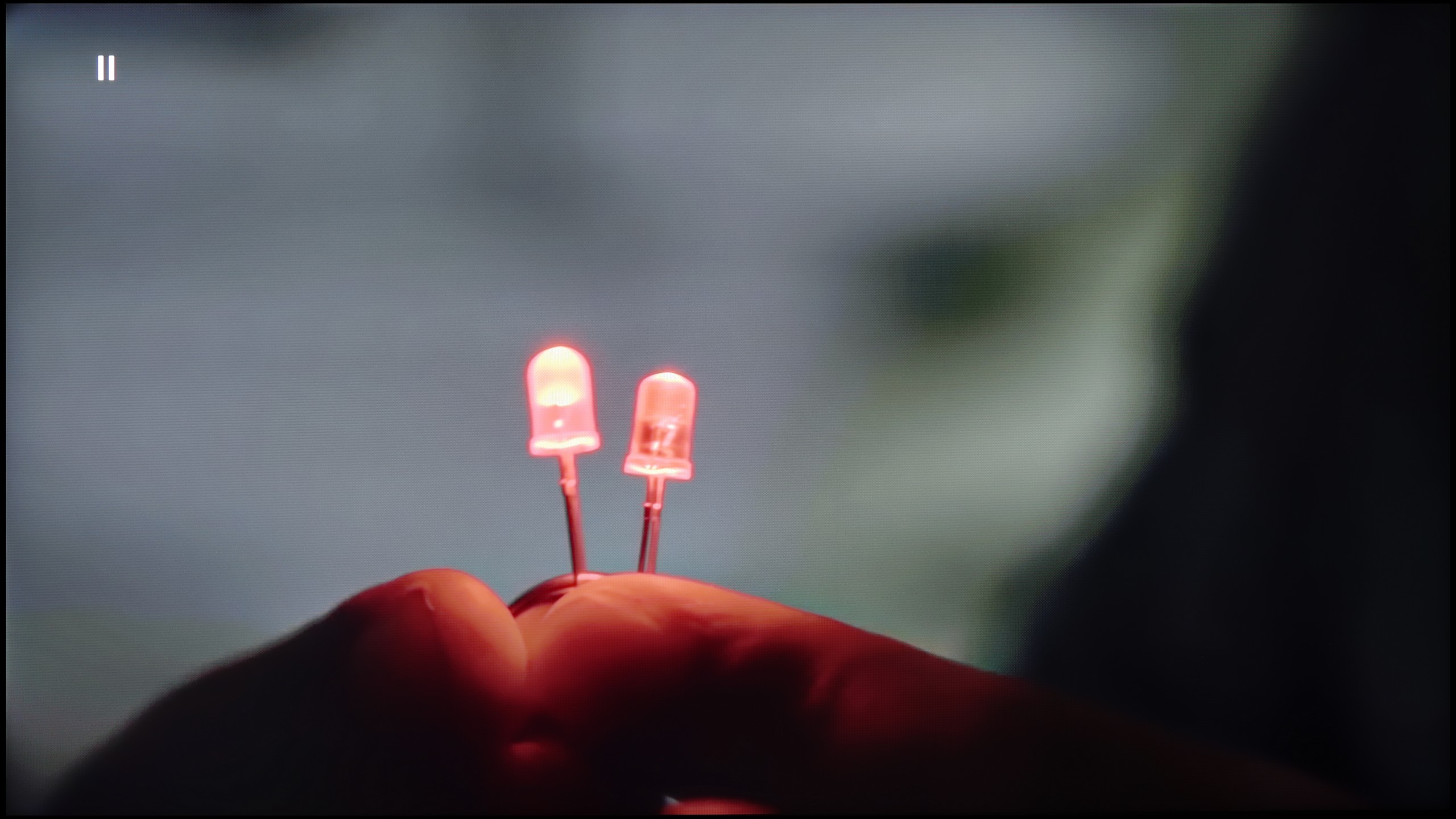
Image without overscan on the SD signal

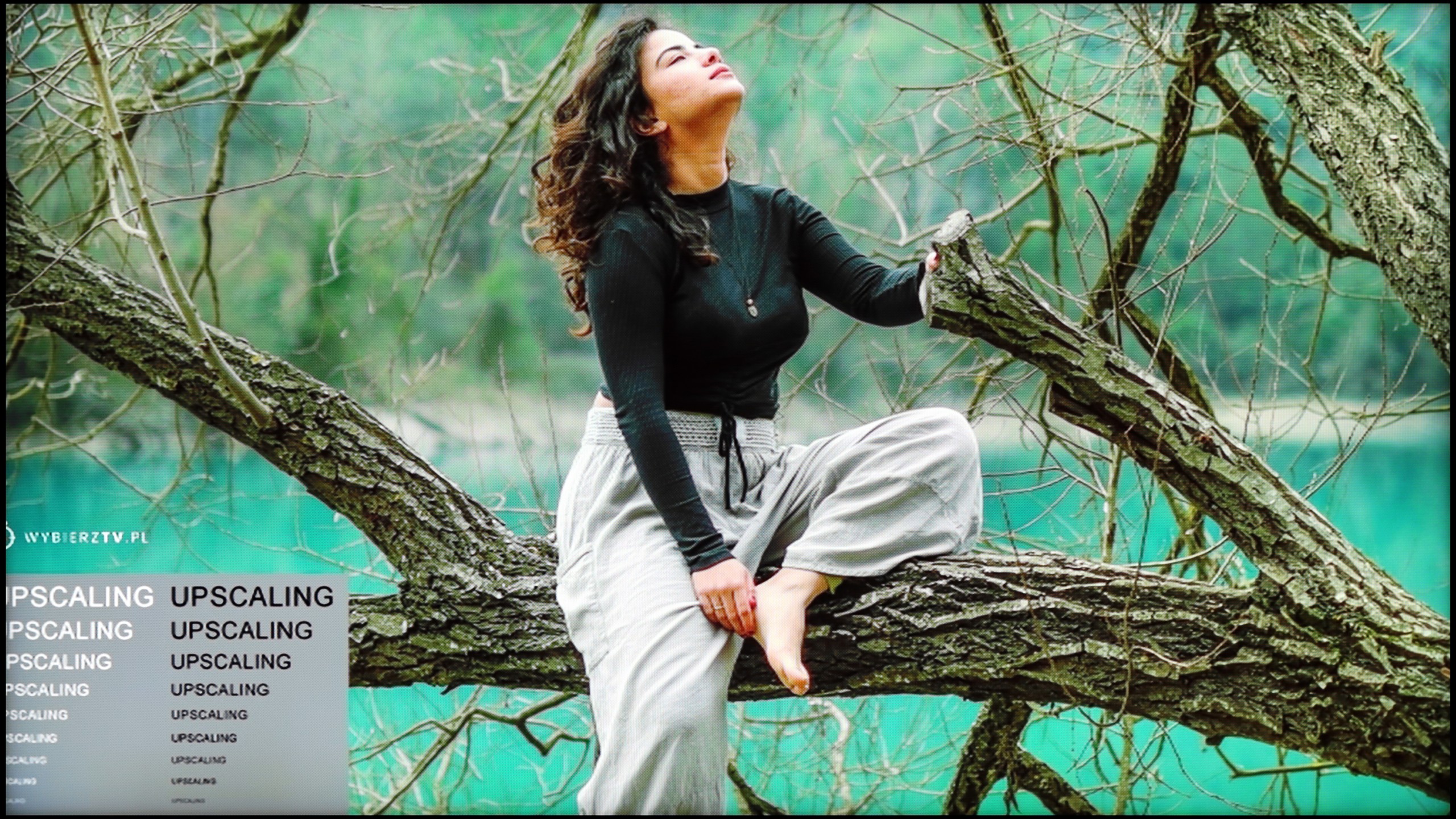
The fluidity of tonal transitions in lower-quality materials looks fantastic – the Noise Reduction feature very effectively smooths out tonal transitions while getting rid of film grain. Although the removal of grain isn't always desirable, the overall final effect is very aesthetically pleasing, especially for those who prefer a cleaner image.
When it comes to upscaling, or image scaling, QN900D shows the tremendous capabilities of the new processor with AI technology. Photos and materials in lower resolution are scaled while retaining many details – for example, a photo with a model looks amazing, free of unnecessary jagged edges, and the branches in the background are not overly serrated.
QN90F handles upscaling very well. Materials in lower resolutions, even SD, are enhanced to a clear and sharp image, where a lot of background detail can be seen. This is a big advantage, as the TV makes older content or everyday television look significantly better than on most budget screens. However, the issue of overscan remains, which is the cropping of the screen edges that cannot be turned off on Samsungs. This can cause some subtitles on the screen to disappear or Auntie's face from the wedding on a VHS tape to be slightly cropped. 😉
The digital image processing also performs well. In the menu, we find a feature called "noise reduction," which can smooth tonal transitions and improve the viewing of lower quality materials, such as those from YouTube. In the medium setting, the effect is most beneficial – it doesn't heavily interfere with details while simultaneously eliminating the problem of "banding" in colours. However, it's worth noting that the feature can be quite aggressive and removes natural film grain in older movies, so it's best to use it sparingly.
Blur and motion smoothness
7.4/10
7.8/10

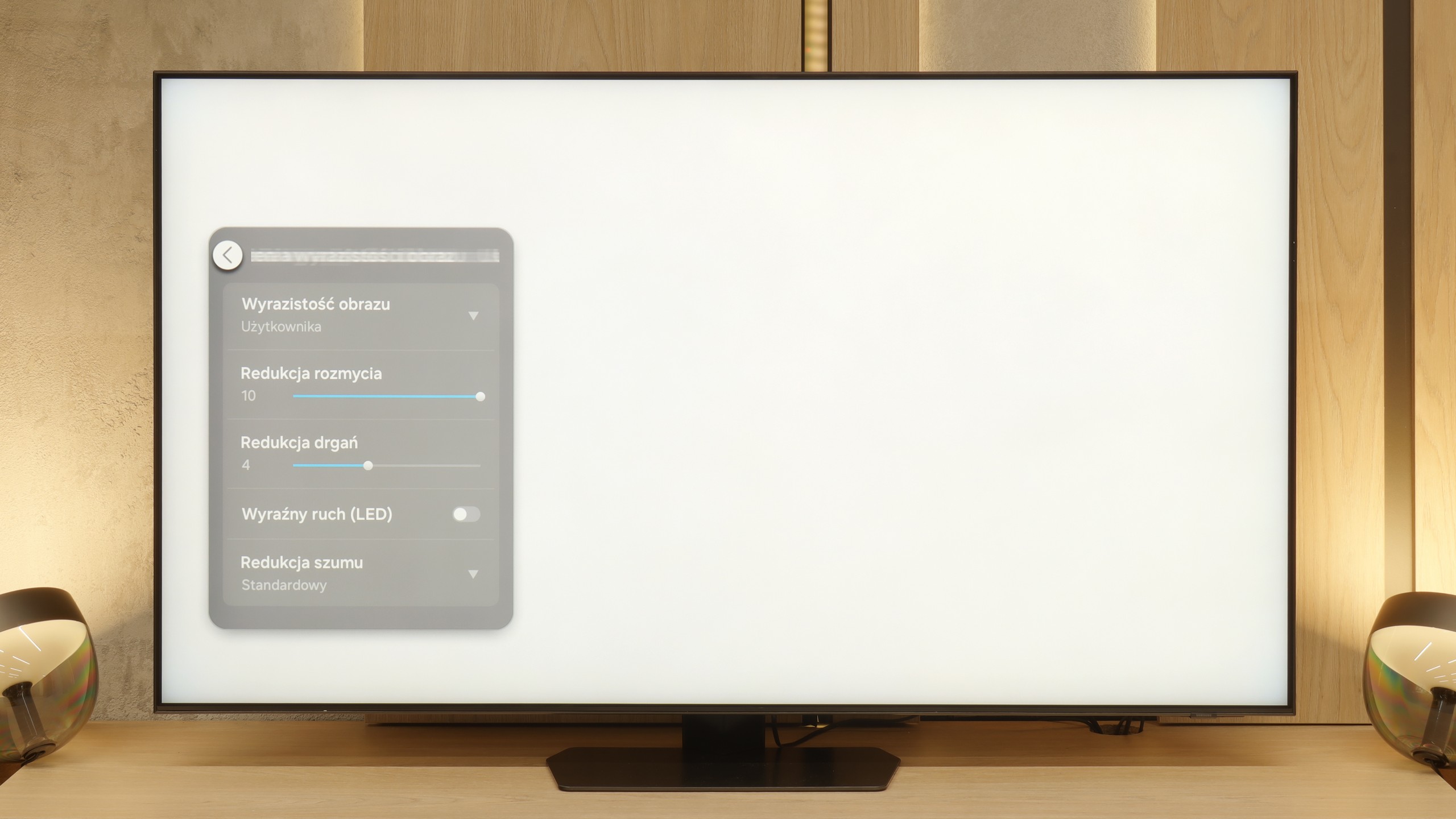
Blur (native resolution, maximum refresh rate):






Blur (BFI function enabled):
Image flickers in this mode
Image flickers in this mode



Smużenie (2160p 240Hz):



Smużenie (4K@165Hz):


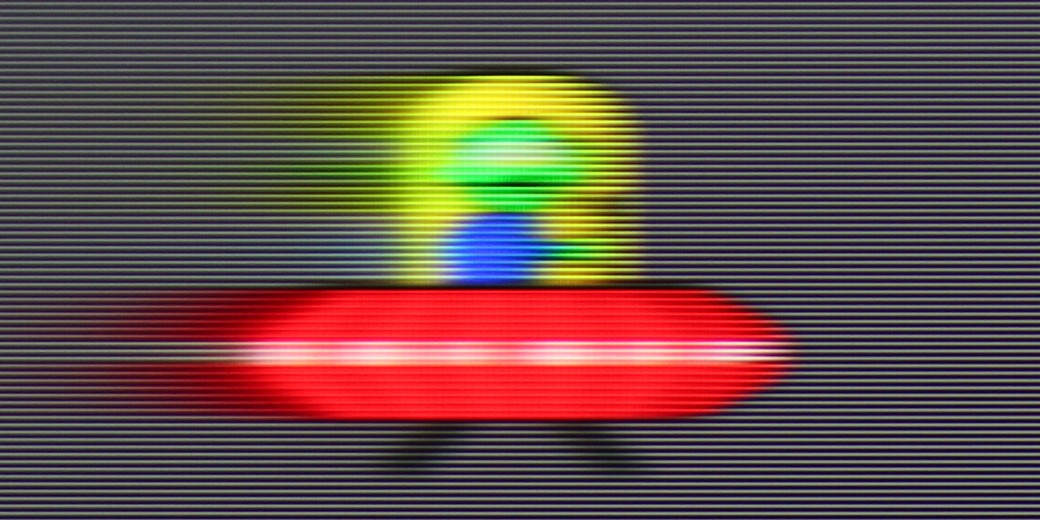
Samsung QN900D is currently the fastest television in the world – literally. A refresh rate of 240 Hz in 4K resolution is an amazing value that PC gamers will surely appreciate. As for movie fans, they won't be disappointed either – Samsung offers a 10-level scale in the picture clarity settings, allowing users to adjust the image. We can choose whether the television should provide a smoother, theatrical effect at the highest settings, or a more cinematic one, with a visible frame, at the lowest settings.
QN90F has been equipped with a panel that has a maximum refresh rate of 165 Hz, and while this advantage will mainly be appreciated by PC gamers, it’s still worth highlighting. In movies or sports broadcasts, we are limited to the classic 120 Hz, but this is not a cause for concern. In practice, the additional motion smoother is more significant here. Thanks to the "Motion Clarity" setting, we can adjust the picture to our own preferences. The blur reduction option is responsible for fluidity and ghosting in sports. Meanwhile, the "judder reduction" function improves motion fluidity in productions recorded at 24 frames, namely films and series. If we set it high, the film looks smoother and more fluid than it was actually shot. Lower values, on the other hand, preserve its cinematic "rawness" with the visible film frame.
Console compatibility and gaming features
9.5/10
8.2/10
- ALLM
- VRR
- VRR range48 - 240Hz48 - 165Hz
- Dolby Vision Game Mode
- Correct implementation of HGIG
- 1080p@120Hz
- 1440p@120Hz
- 4K@120Hz
- Game bar

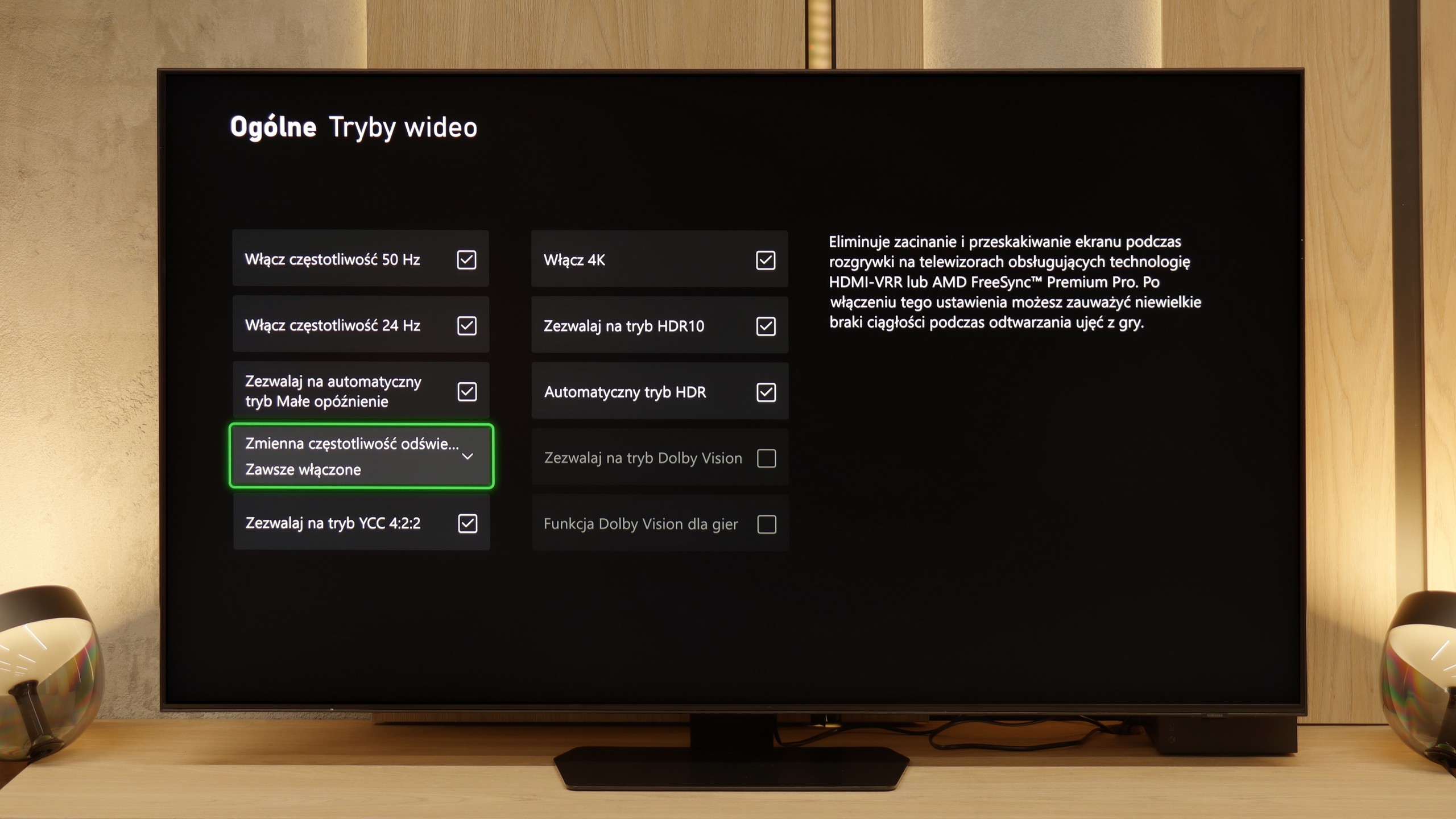

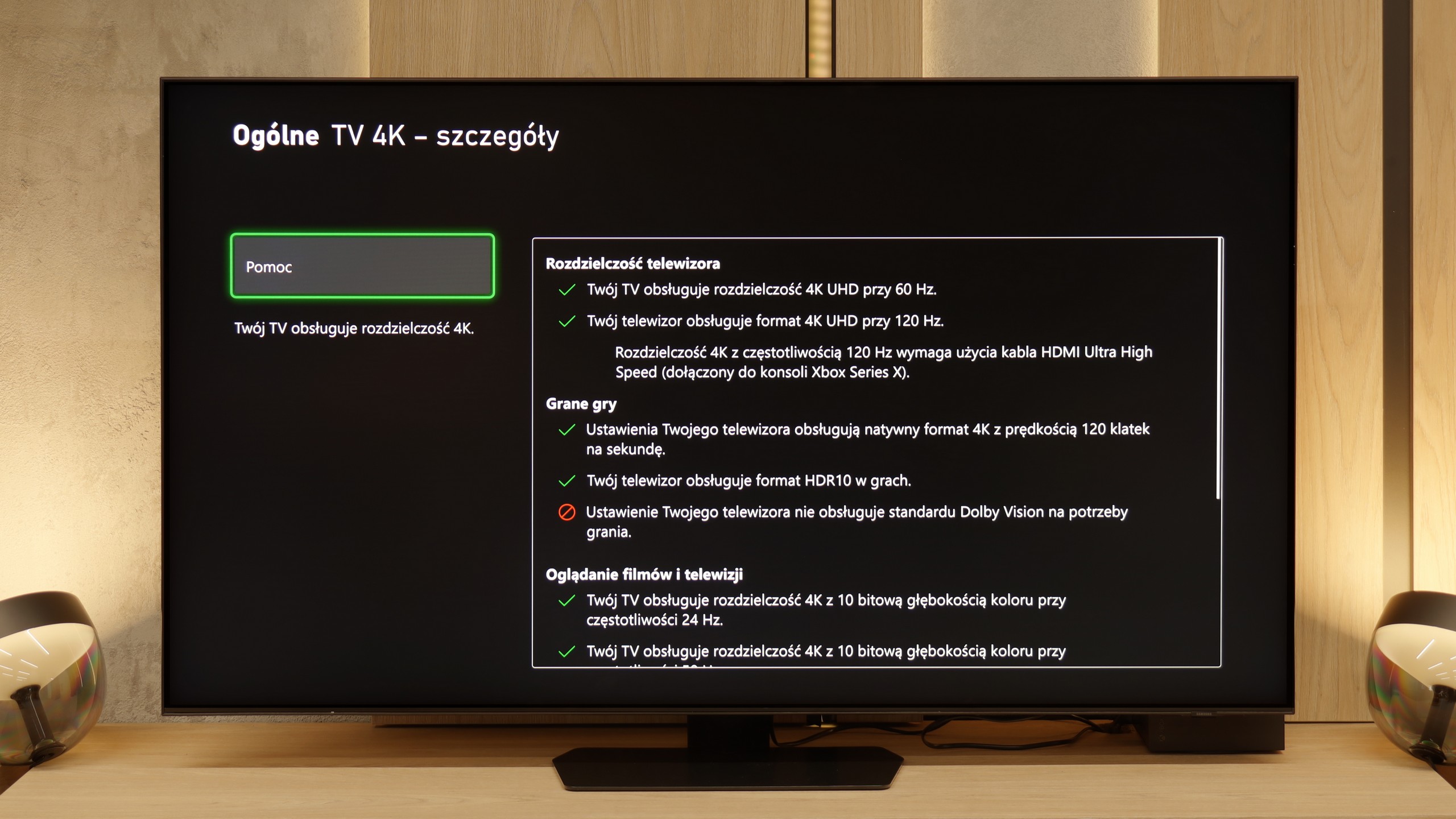

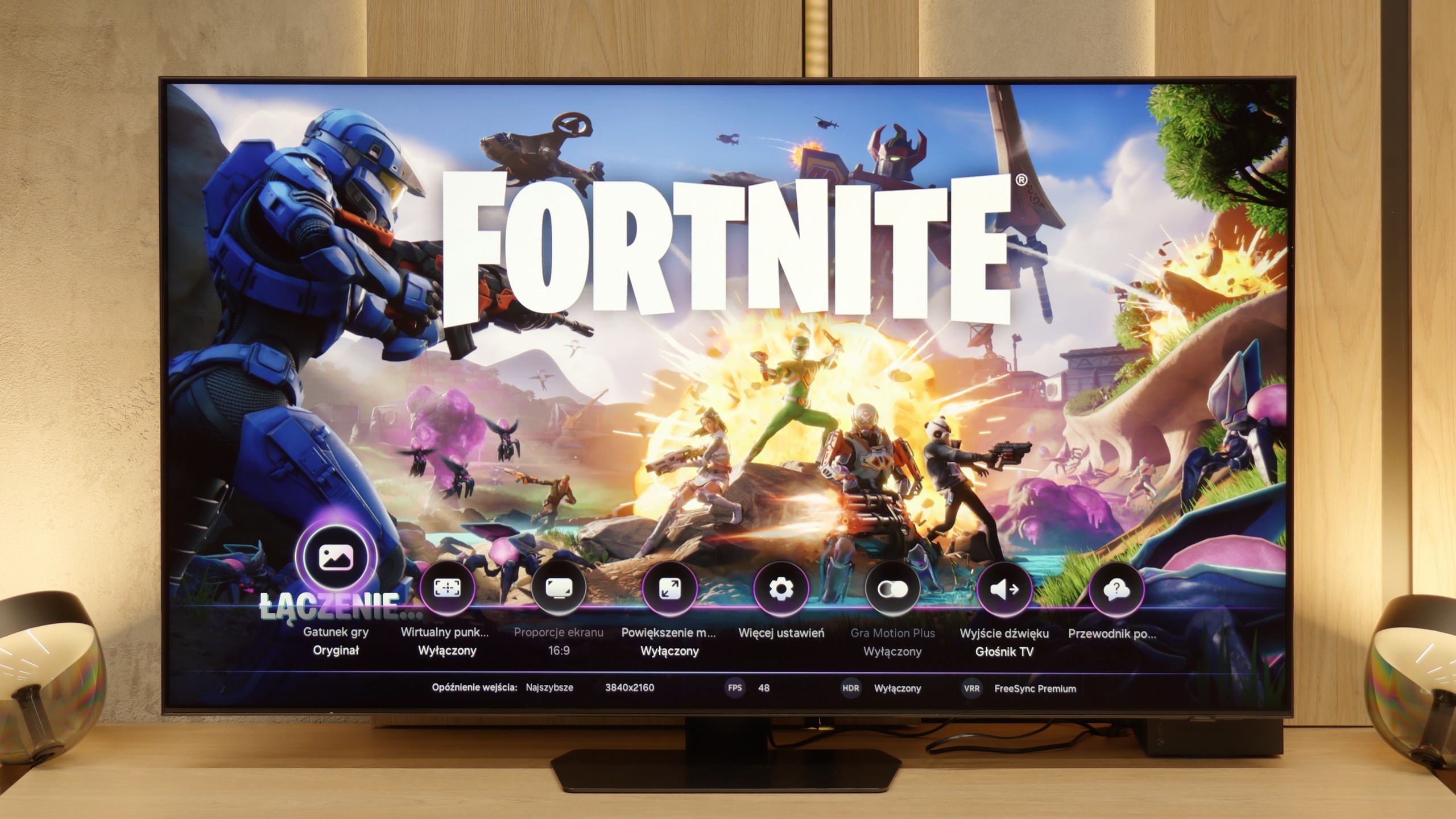

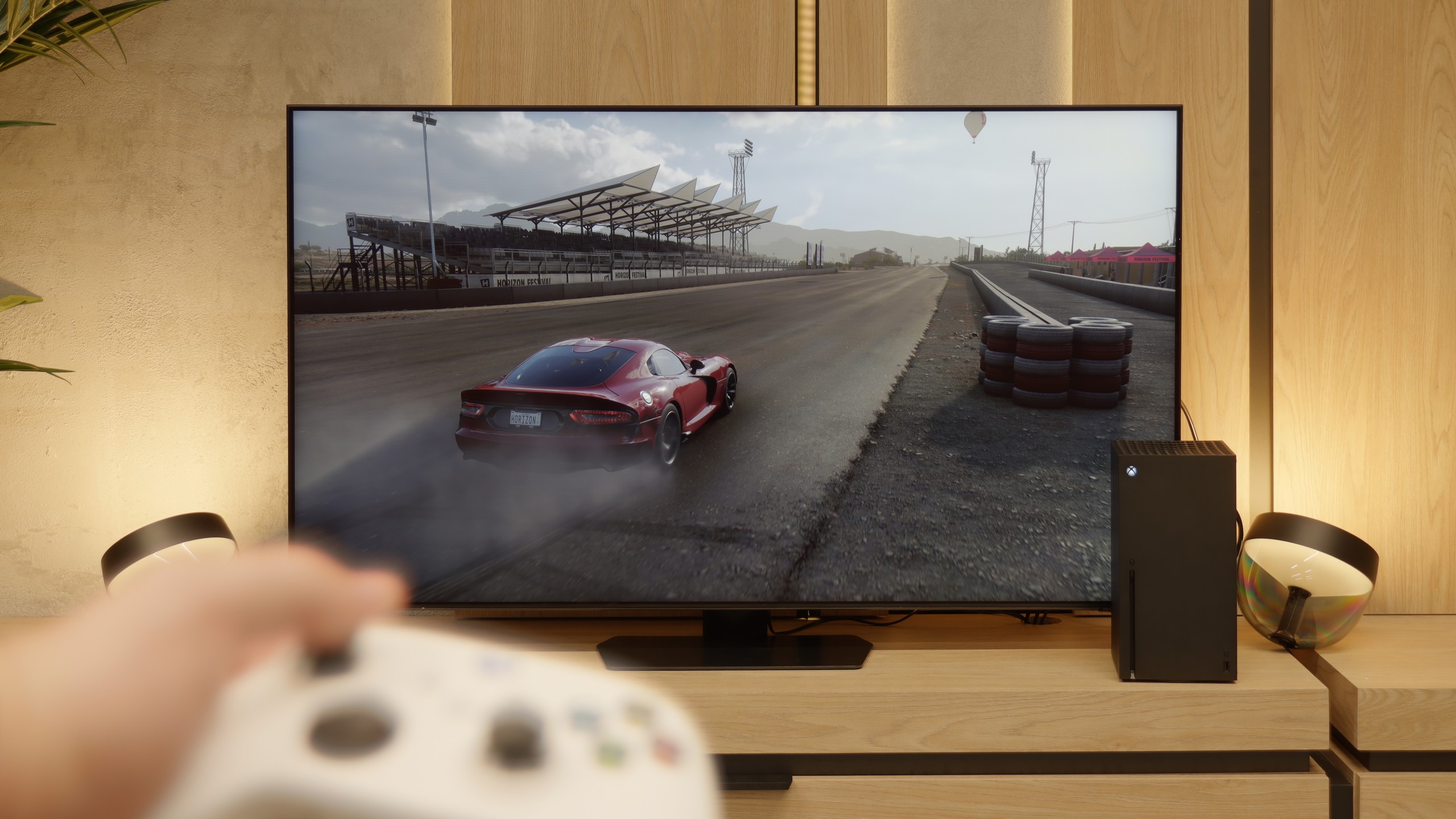
Samsung QN900D is a television that offers excellent compatibility with consoles and a range of features that gamers will appreciate. It has 4 HDMI 2.1 ports, although unfortunately without the full bandwidth of 48 Gb/s. Nonetheless, for the average user, this is more than sufficient. Additionally, the television supports Auto Low Latency Mode (ALLM) and Variable Refresh Rate (VRR), which means smoother images and no screen tearing during dynamic gameplay. The G-Sync and FreeSync technologies are also noteworthy, providing optimal compatibility with consoles and computers equipped with the appropriate graphics cards, minimising stuttering effects and ensuring a smooth picture.
One of the unique features available only in Samsung televisions is the Xbox Game Pass app, which allows for game streaming without the need for a console. This is a very convenient solution that lets you enjoy your favourite games without having to purchase additional hardware. Furthermore, the QN900D has Game Bar – a special panel that enables quick access to gaming-related settings, making game mode setup quick and intuitive.
Another interesting feature is the Auto Motion Plus Game function, which is a special motion smoothing mode that can increase the frame rate (works up to a maximum of 4K@60Hz). Importantly, this does not cause a significant increase in input lag, allowing players to enjoy both greater image fluidity. All these features make the Samsung QN900D an excellent choice for those looking for a gaming television with the highest possible parameters.
QN90F has almost everything to become the perfect TV for gamers. Things like four HDMI ports, VRR, ALLM, and a refresh rate of up to 165 Hz need no reminder. It deserves high praise for the Game Motion Plus mode, Samsung's proprietary motion smoothing for games. Thanks to this, you can add a few "artificial" frames and make the image generated from the console look smoother than it should. This is a very unique solution in the world of TVs – competing systems usually do not offer this – and that’s why Samsung has had a strong selling point among gamers for years, even despite the lack of support for the still niche Dolby Vision in games.
So why do we refer to it as an "almost" perfect screen? Unfortunately, similar to previous Samsung models, we noticed an issue with the lack of HGiG functionality. This solution allows the TV to leave tone mapping control to the console, so that games look exactly as intended by the developers. What’s worse, this feature was present before and disappeared after software updates. Instead of minor fixes, we got a step back. It's a shame, because without this lack, the QN90F could really be the ideal choice for gamers in the miniLED category.
Input lag
9.8/10
9.6/10
SDR
HDR
Dolby Vision
When it comes to signal delay (input lag), Samsung QN900D achieves impressive results. Values below 15 ms are truly excellent, making the TV an ideal choice for gamers expecting minimal delays during gameplay. The input lag at 8K resolution is also noteworthy, clocking in at just 17 ms – this is also a very good result that allows for enjoying dynamic games in the highest possible resolution without noticeable delays.
Input lag on the QN90F is very low. For 120 Hz content, it measures around 10–12 ms, and at 60 Hz it drops below 20 ms. These are values that can confidently be called exemplary. The slightly higher input lag – by 1–2 ms – is due to the fact that the lowest latencies, below 10 ms, are reserved for the 165 Hz mode. Regardless of resolution or refresh rate, you can count on the QN90F always responding quickly and responsively to our movements on the controller or keyboard and mouse.
Compatibility with PC
8/10
8.8/10

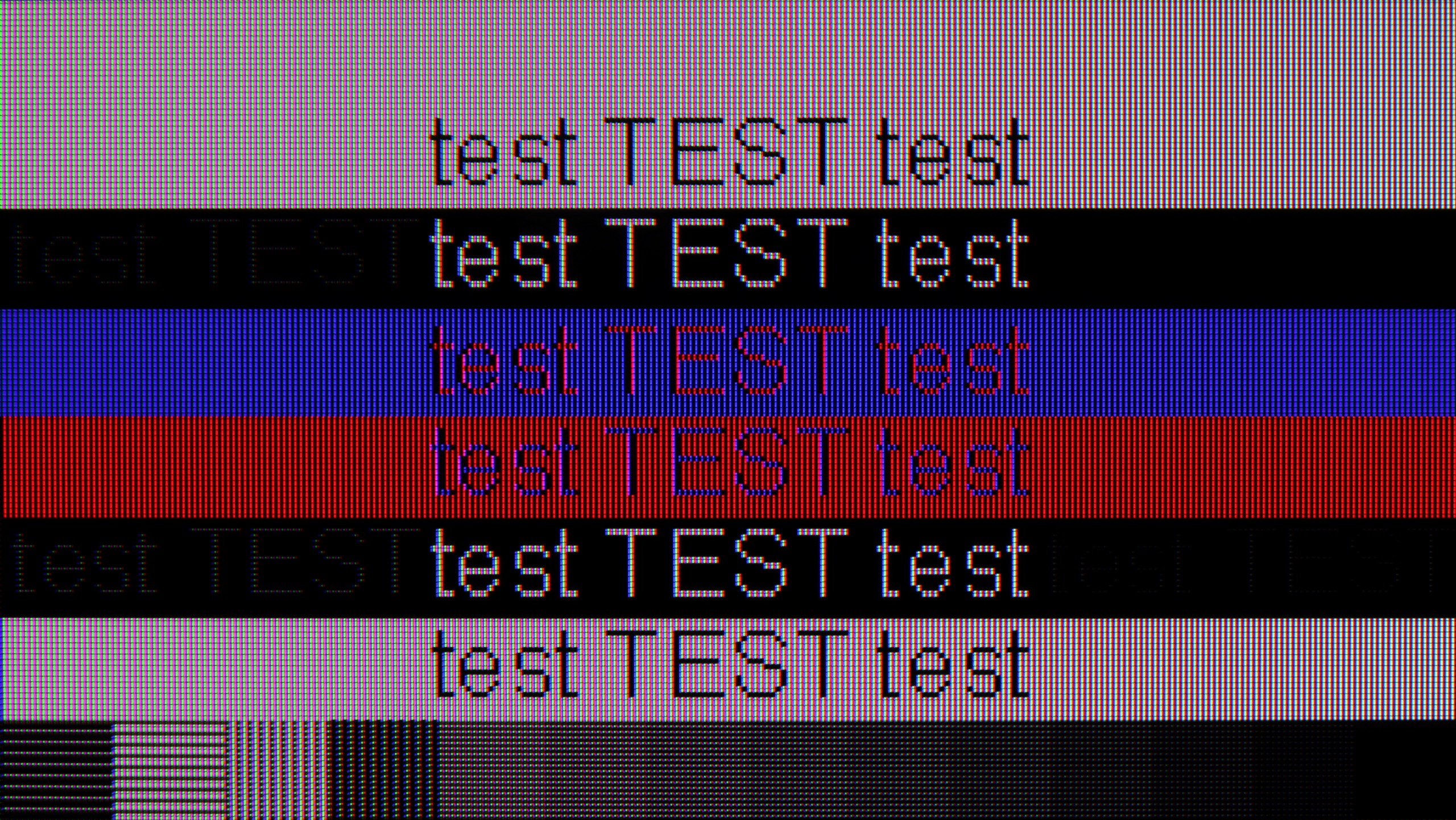
Samsung QN900D offers excellent compatibility with computers, making it a great choice for users looking for a large screen for work and entertainment. It supports full Chroma 4:4:4 colour reproduction, which translates to better image quality when using text and office applications. Font readability is quite decent, especially considering the 8K resolution, which offers an immense level of detail.
Unfortunately, despite the very high resolution, the television does have some issues with bright fonts on a dark background – one can notice slight shadows created by subpixels. It may not be a critical issue, but for more demanding users, it could impact comfort, especially when working in text applications. Nevertheless, the overall image quality and compatibility with computers are of a high standard. It's also worth praising the television for supporting 240Hz at lower resolutions such as 4K. This allows high-end PCs to showcase their prowess in games.
Collaboration with a PC is another strong point of the QN90F. It’s a screen that performs well for both work and gaming. This makes sense especially in smaller sizes, e.g., 43 inches, where the television can easily fit on a desk. The 165 Hz mode, primarily intended for PC gamers, supports technologies like G-Sync and AMD FreeSync Premium Pro, so gameplay is smooth and very responsive. Office work performs equally well – the readability of fonts is high thanks to proper chroma handling. However, we noticed that switching the refresh rate from 165 Hz to 120 Hz further improves the readability of very dark text and thin lines. Therefore, if someone wants to use the QN90F as a work monitor, it's worth considering the 120 Hz mode.
Viewing angles
7.8/10
3.6/10
The viewing angles on the QN900D television are very good, despite the use of a VA panel. Thanks to a special coating that widens the viewing angles, the image remains flawless even when viewed from an angle. This is particularly important when there are more people in the room – every viewer, regardless of their seat, can enjoy excellent image quality without distortion or loss of colour. This makes the Samsung QN900D a great choice for watching movies and sports broadcasts with a larger group.
The viewing angles on the QN90F are rather average and typical for LCD screens with a VA panel. It’s a bit of a shame that Samsung opted out of additional coatings to widen the viewing angles in this model – probably at the cost of using a matte panel. The effect is that at larger angles off centre, the drop in brightness is quite significant, and the colours lose their intensity. This is a compromise that one has to consider when choosing a screen with a classic VA panel.
TV efficiency during daytime
5/10
7.2/10

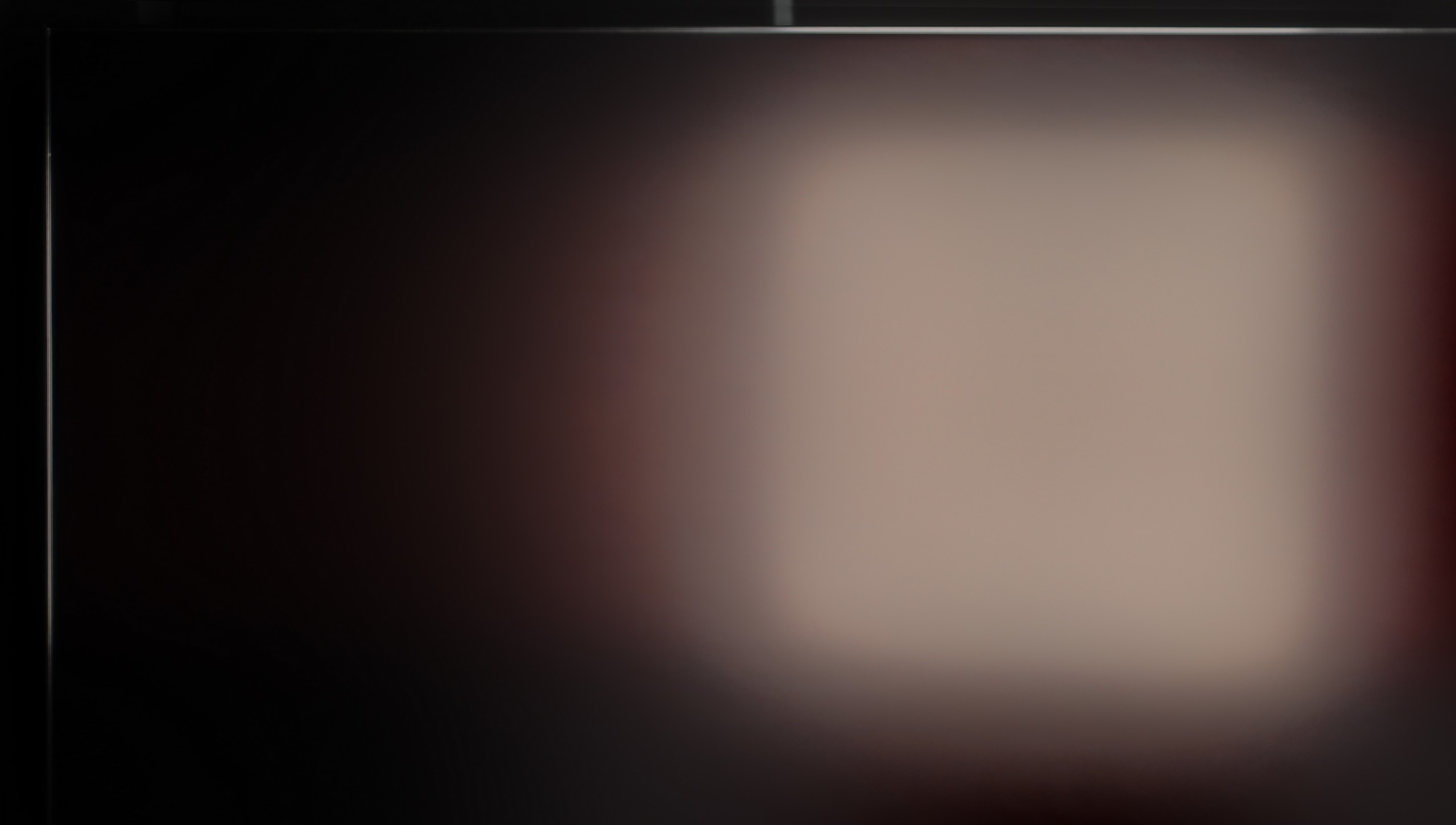


Matrix brightness
Average luminance SDR
Samsung QN90F / QN92F: 665 cd/m2
Samsung QN900D Neo QLED 8K: 387 cd/m2
When it comes to the performance of the Samsung QN900D TV in daytime conditions, it generally presents itself as average. The television has a special anti-reflective coating that helps reduce glare, however, due to the VA panel and the angle-enhancing coating, light reflections are strongly dispersed horizontally - resembling the colours of a rainbow. This results in a loss of image richness, especially in bright rooms where intense light sources can negatively affect the quality of the displayed image.
QN90F is the first Neo QLED 4K with a matte display, and it must be said that this change is noticeable straight away. During the day, the screen behaves completely differently than typical LCD TVs – reflections are heavily suppressed, glare nearly disappears, so there’s no need to constantly cover windows or reconfigure furniture. Colours in a bright room appear natural, though their intensity can slightly drop with very strong lighting. However, this is not something that ruins the viewing experience – rather a small price to pay for comfortable viewing in the sunlight. Additionally, the average SDR brightness is around 700 nits, which means the TV can easily "cut through" in very sunny living rooms. It’s hard to give a better recommendation: if someone is looking for a miniLED 4K TV that can handle a brightly lit living room, the QN90F is one of the safest choices.
Details about the matrix
Subpixel Structure:

Panel uniformity and thermal imaging:

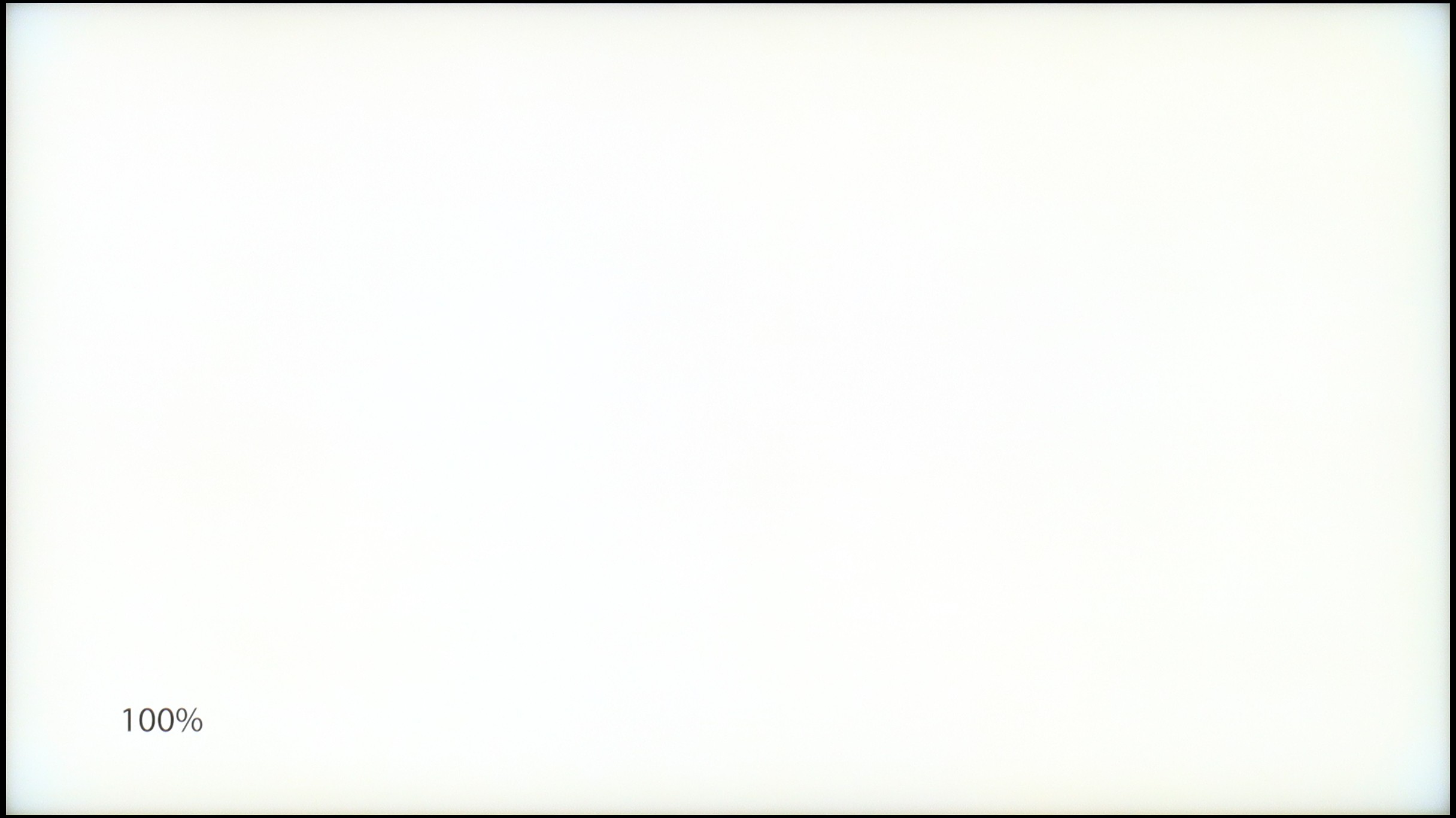
Samsung QN900D Neo QLED 8K
Samsung QN90F / QN92F
TV features
7.4/10
7.7/10
- HDMI inputs0 x HDMI 2.0, 4 x HDMI 2.1 40Gbps0 x HDMI 2.0, 4 x HDMI 2.1 48Gbps
- OutputsToslink (Optical audio), eARC (HDMI), ARC (HDMI)Toslink (Optical audio), eARC (HDMI), ARC (HDMI)
- Network InterfacesWi-Fi 2.4GHz, Wi-Fi 5GHz, Ethernet (LAN) 100MbpsWi-Fi 2.4GHz, Wi-Fi 5GHz, Ethernet (LAN) 100Mbps
- TV receptionDVB-T, DVB-T2, DVB-S, DVB-S2, DVB-CDVB-T, DVB-T2, DVB-S, DVB-S2, DVB-C
Classic features:
- Recording to USB (terrestrial TV)
- Recording programming
- Picture in Picture (PiP)
- RF remote control (no need to aim at the screen)
- Backlit remote control
- Teletext
- Audio only mode
- Bluetooth headphones support
- Simultaneous Bluetooth headphones & TV audio
Smart features:
- AirPlay
- Screen mirroring (Windows Miracast)
- Voice search
- Voice search in native language
- Ability to connect a keyboard and mouse


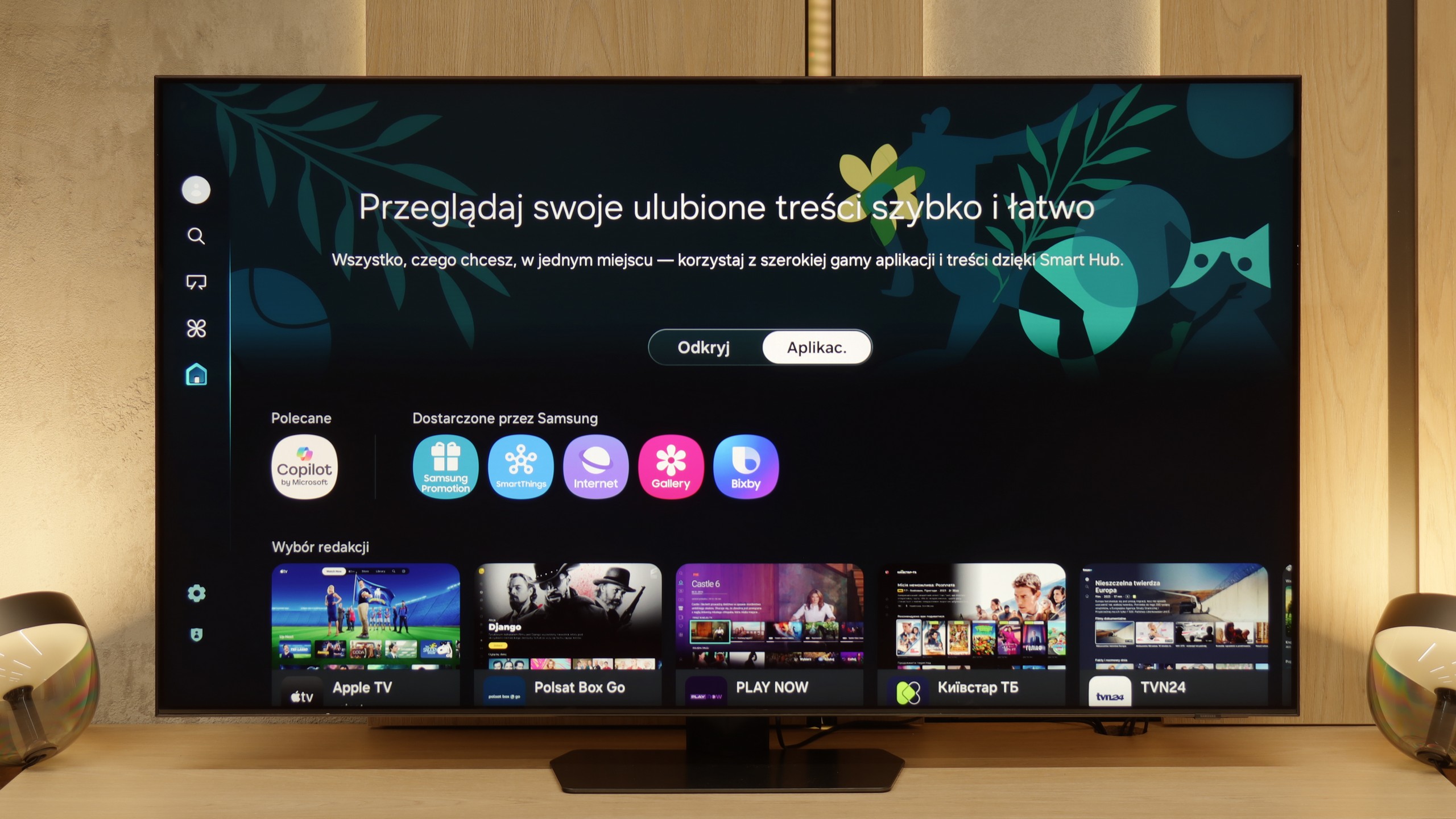
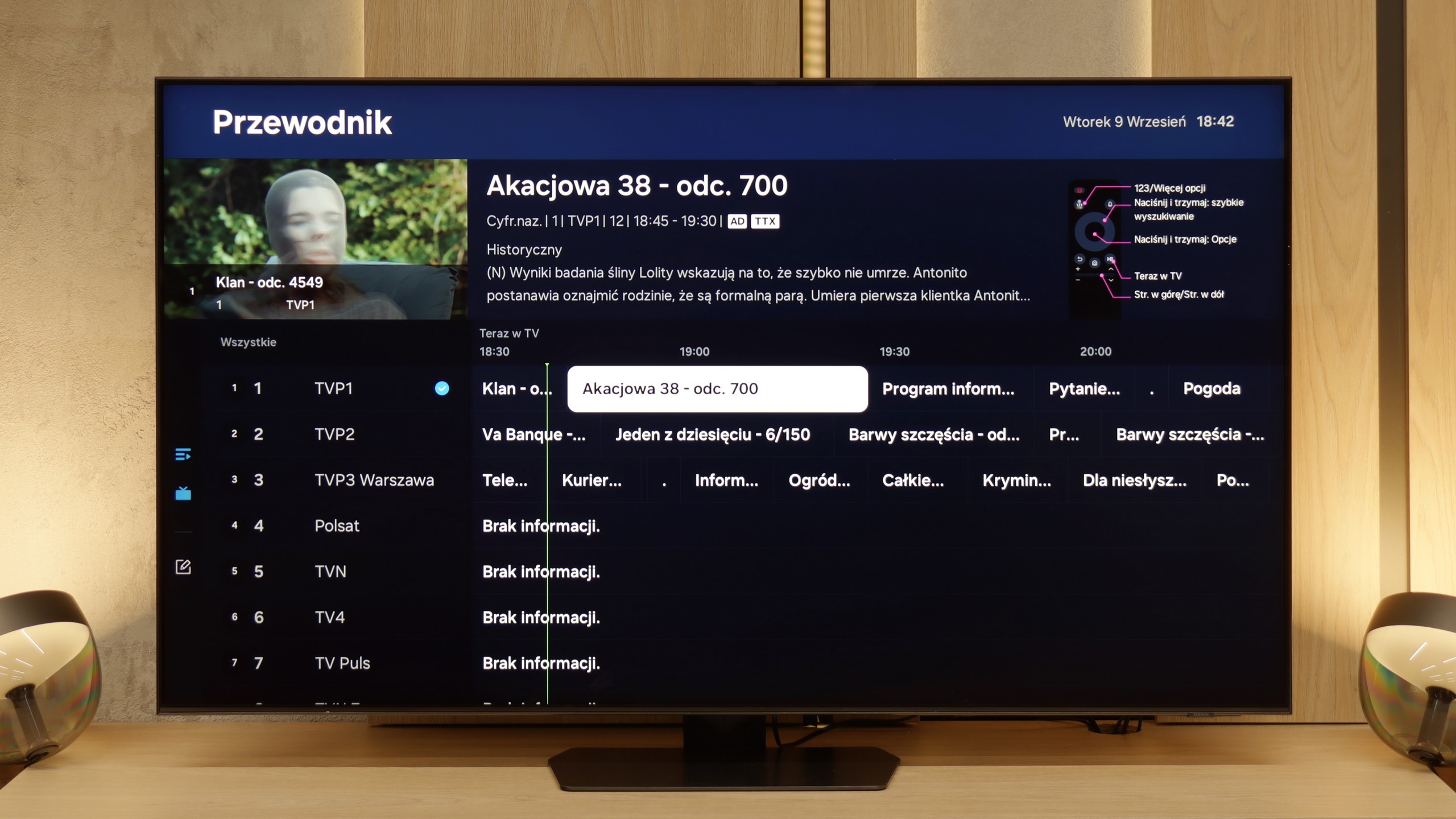
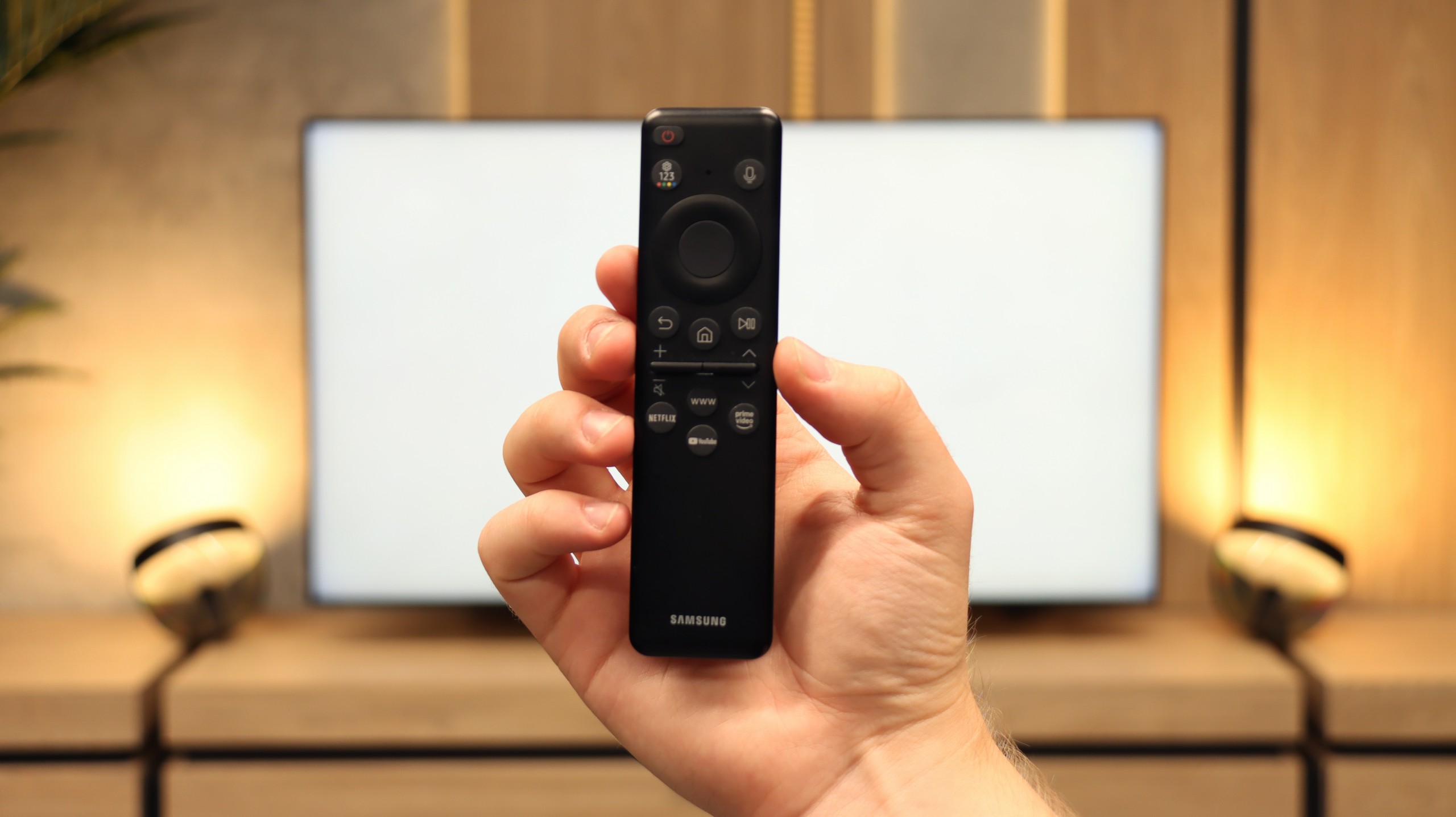
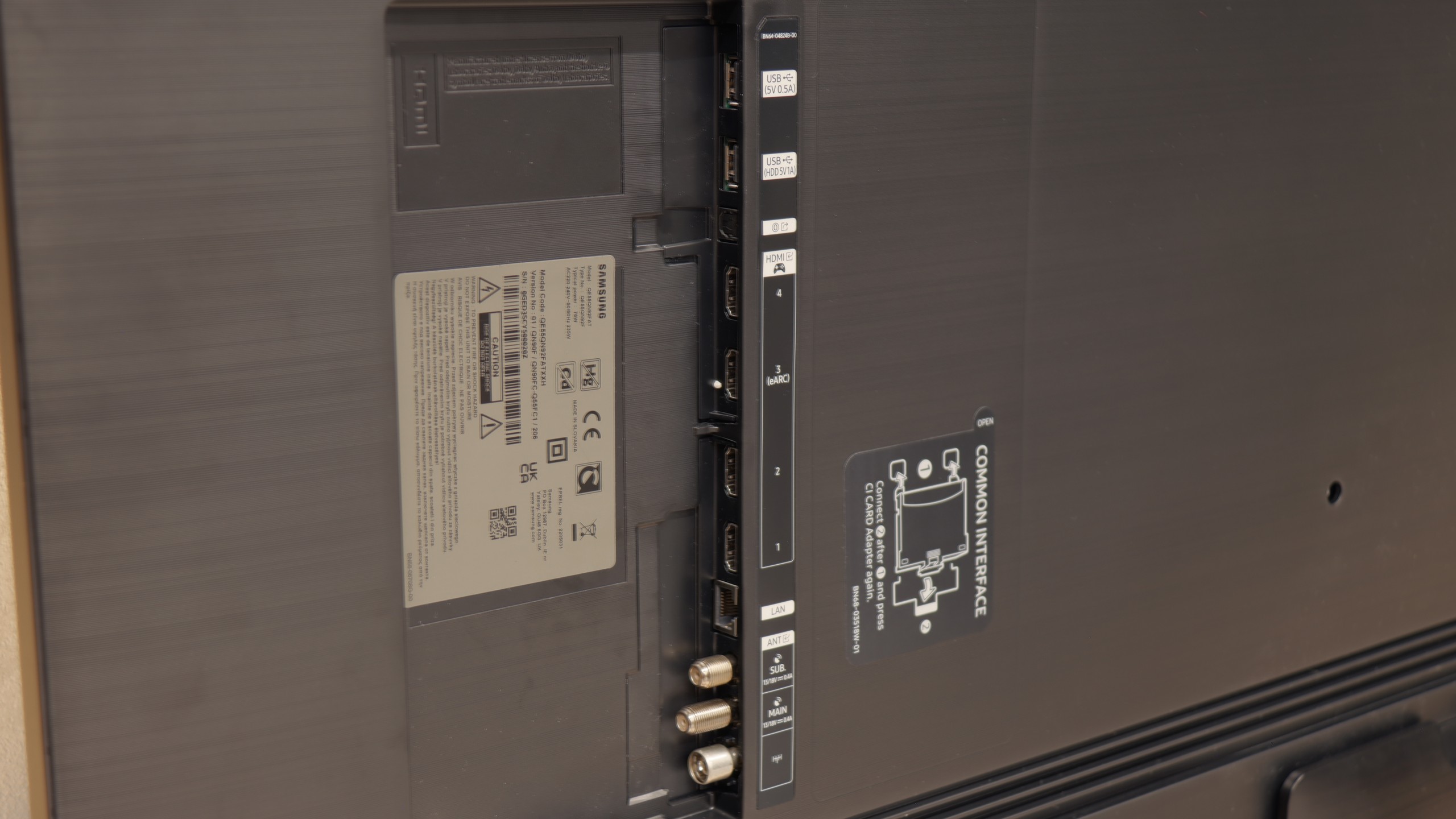
The Tizen system that powers the Samsung QN900D offers excellent integration with other devices, allowing for convenient use of numerous applications, including AirPlay. Users can also control other equipment using the SmartThings app. The television also works with lighting systems such as Philips Hue, which helps create an atmospheric setting during movie screenings.
In everyday use, the QN900D performs brilliantly. The solar remote can control other devices, such as set-top boxes, making the lack of a recording function less of an issue. Additionally, the television offers a Picture-in-Picture (PiP) feature, and with its 8K resolution, it even allows the screen to be split into four sections, making it exceptionally functional and useful for watching multiple programs at once as well as for effective work with various image sources.
The Samsung QN900D also stands out with its modern design. Its slim profile makes it the thinnest Mini LED television on the market, and the use of the One Connect module enables tidy cable management, giving the area around the TV a neat and elegant appearance. The central stand adds lightness and creates the impression that the television is floating in the air, which imparts a unique character. Additionally, the Ambient Mode feature allows for decorative graphics to be displayed or the image to be adjusted to suit the interior, making the television an integral part of the room, even when it is turned off.
Smart TV Features: Tizen
Samsung has been developing its Tizen system for years, and in the QN90F, it shows that it has reached a point where it's really hard to nitpick. The system runs smoothly, responds quickly to commands, and doesn't struggle with more demanding applications. If someone uses an iPhone – there's AirPlay and screen mirroring. If someone has an Android phone – there won’t be any problems either. Additionally, there's a voice assistant that understands commands in several languages, including Polish, so you can play a movie or change the channel without reaching for the remote. An interesting feature is the integration with Microsoft's Coopilot and AI functions, but SmartThings proves to be much more practical – thanks to it, the TV can become the centre of the home ecosystem, connecting not only Samsung devices but also, for example, Philips Hue bulbs.
Classic Features
The QN90F can also serve as a regular television. While we can forget about USB recording, we do get PIP mode, which is picture-in-picture – a function that's rarely seen these days. With it, you can follow a match and a series simultaneously, which can save the evening in many households. Also, there's a clear EPG guide and a small remote that charges with light (so no batteries are needed) and can take control of the decoder, soundbar, or even a console. It may not be the most advanced on the market, but it proves to be simply convenient in everyday use.
Playing files from USB
9.2/10
9.1/10
Supported photo formats:
Maximum photo resolution:

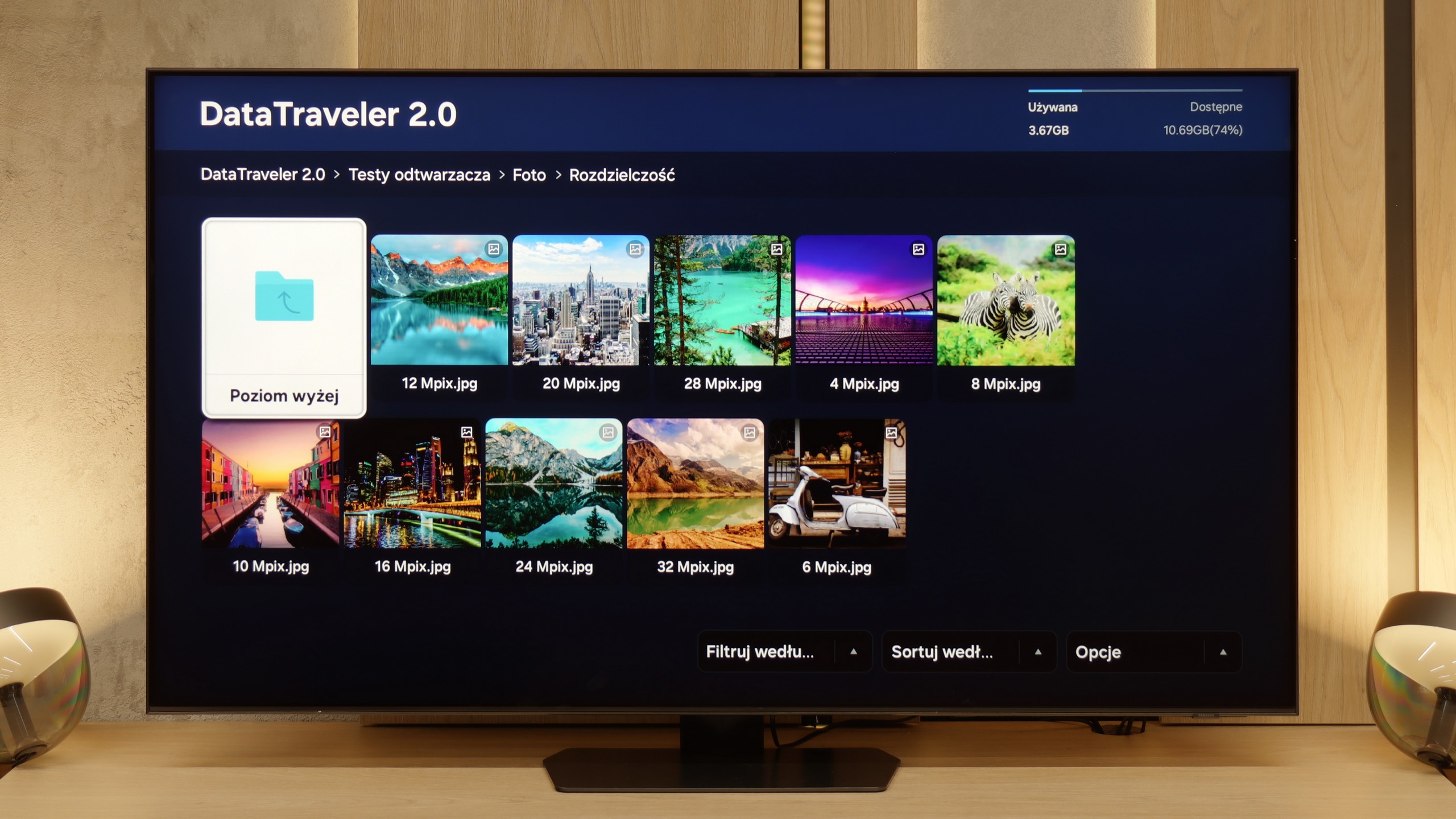
QN900D Samsung plays most popular video and audio formats without any issues. The resolution of photos is also not a challenge for it; however, the television has difficulty opening less common photo formats, including the HEIC format from Apple.
The built-in media player on the QN90F performs quite well. It supports most popular audio and video formats and can also easily play graphic files such as JPEG and PNG. The problem arises with HEIC files – a kind of high-quality photo standard used in iPhones. In theory, the television should support them, as they are listed among the compatible formats, but in practice, trying to open a HEIC file can freeze the entire system and force a power reset. It’s a bit of an odd situation and another small glitch that shouldn't happen in equipment of this caliber. On the other hand, one can be very pleased as it supports most popular audio and video formats.
Apps
8.7/10
8.7/10














































Sound
7.4/10
7.8/10
- Maximum volume-86dB
- Dolby Digital Plus 7.1
- Dolby True HD 7.1
- Dolby Atmos in Dolby Digital Plus (JOC)
- Dolby Atmos in Dolby True HD
- DTS:X in DTS-HD MA
- DTS-HD Master Audio
Television Samsung QN900D, equipped with an audio system with a power of 90 W in a 6.2.4 channel configuration. Despite its slim design, the sound is clear and immersive, further supported by Dolby Atmos technology, which provides an engaging audio experience. Unfortunately, like many other Samsung televisions, the QN900D does not support DTS audio tracks, which may be significant for home theatre users.
QN90F plays really well. Despite the sleek design of the television, you can sense a slight bass that adds depth to the sound. The speaker system operates in a 4.2.2 configuration and offers a total power of 60 W – for built-in speakers, that's a truly solid result. Moreover, with materials that support Dolby Atmos, one can experience a subtle spatial effect, which works quite well for everyday viewing. Of course, with equipment of this class, it's hard not to recommend an additional soundbar. It's best to opt for one that supports Q-Symphony technology – thanks to it, the television and soundbar play simultaneously, creating a fuller and definitely more cinematic effect.
Acoustic Measurements
No acoustic data
86dBC (Max)
75dBC


